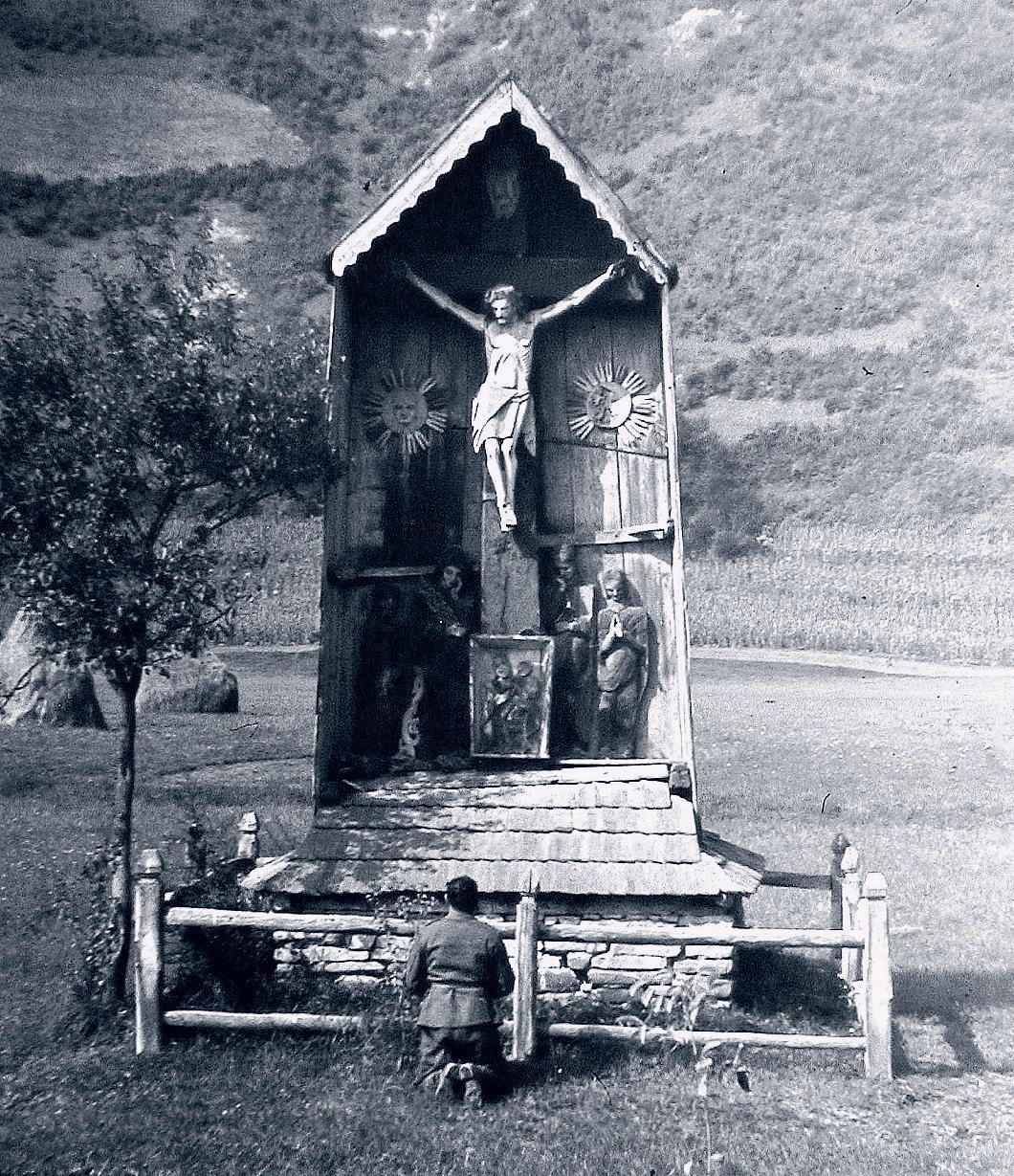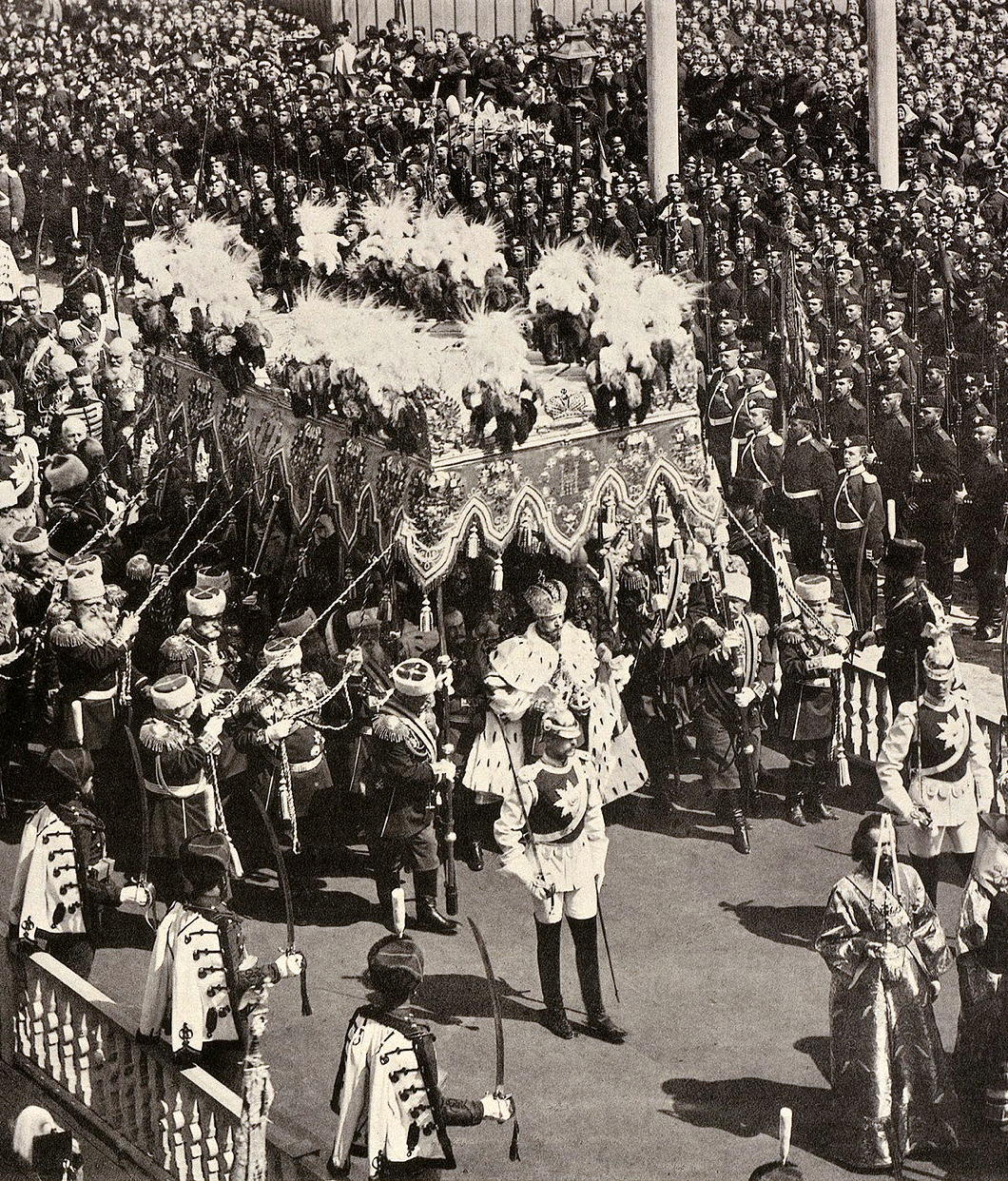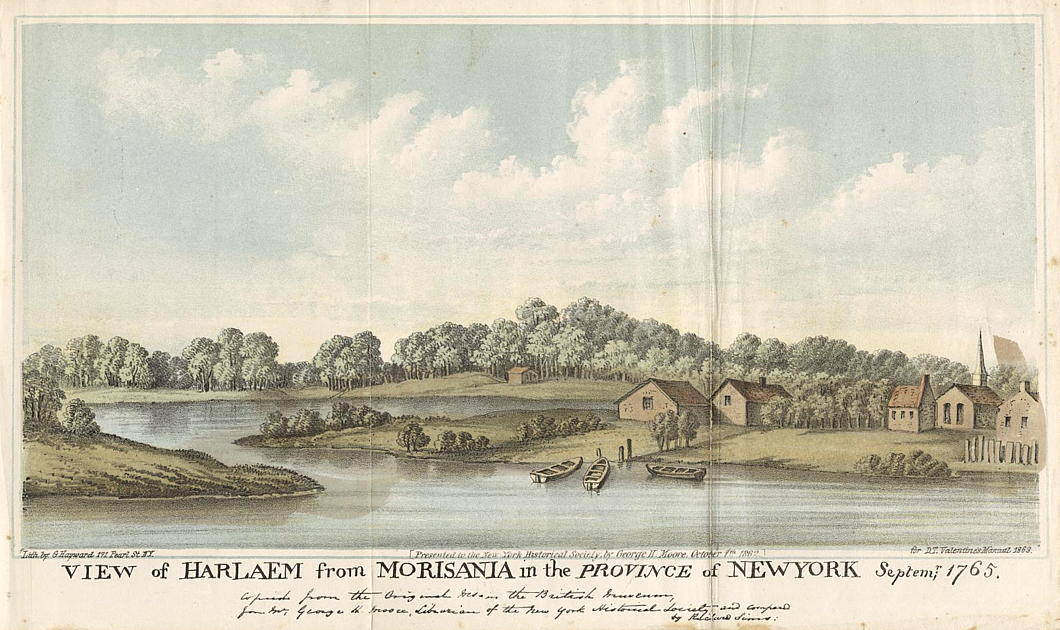History
About Andrew Cusack
 Writer, web designer, etc.; born in New York; educated in Argentina, Scotland, and South Africa; now based in London.
Writer, web designer, etc.; born in New York; educated in Argentina, Scotland, and South Africa; now based in London. read more
News
Blogs
Reviews & Periodicals
Arts & Design
World
France
Mitteleuropa
Knickerbockers
Argentina
The Levant
Africa
Cape of Good Hope
Netherlands
Scandinavia
Québec
India
Muscovy
Germany
Academica
Dom Miguel de Castro
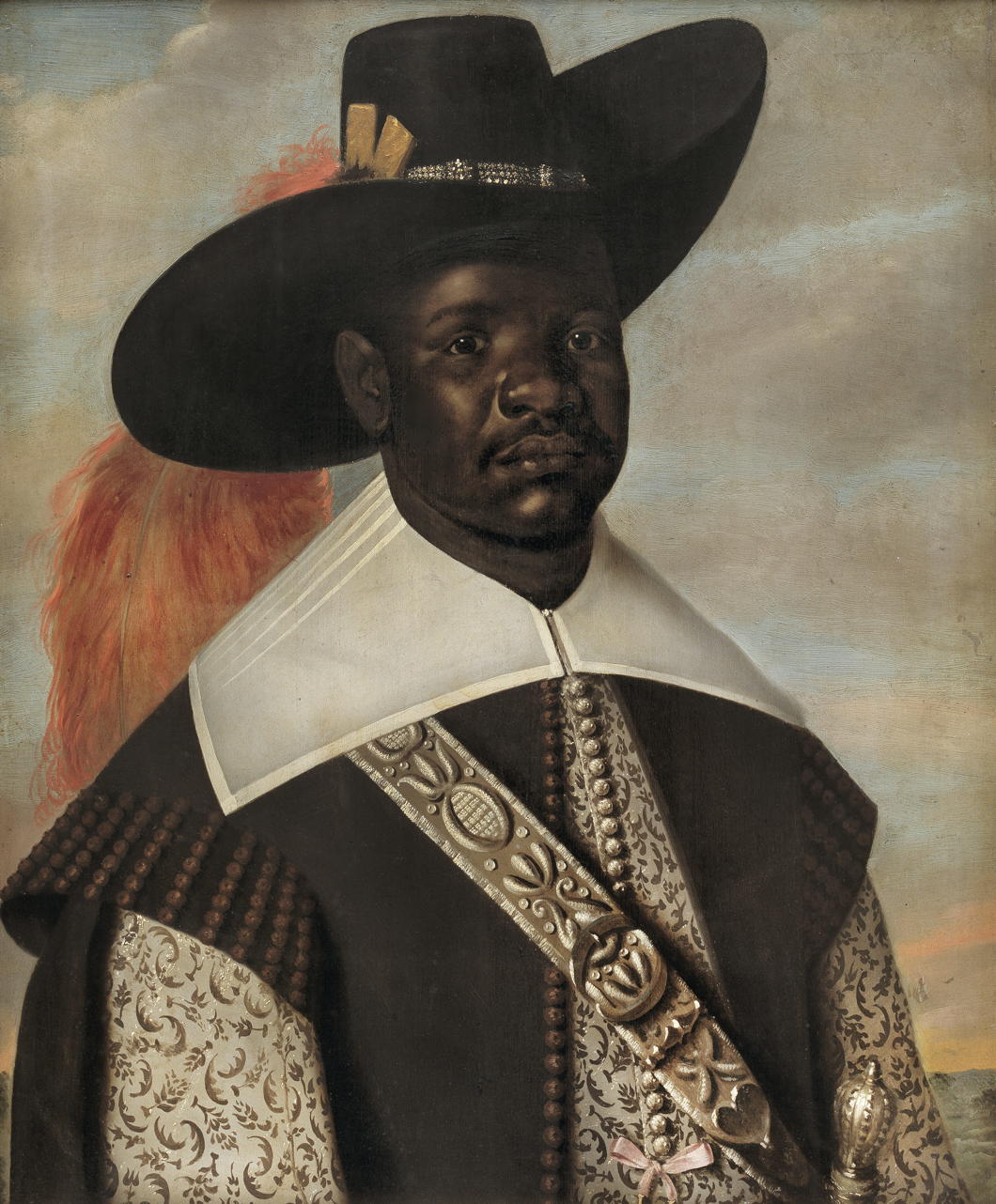
During the 1640s, a conflict arose between Kongo’s pious and militarily successful King Garcia II and his vassal, the Count of Sonho. Seeking the help of the Dutch Republic and its stadtholder, the Count sent his cousin, Dom Miguel de Castro, to the Netherlands as an emissary.
Dom Miguel arrived at Flushing in June 1643 and proceeded to Middelburg where he was received by the Zealand chamber of the Dutch West India Company.
During the Kongo nobleman’s fortnight in Middelburg, the chamber commissioned these portraits of Dom Miguel and his two servants painted by Jasper Becx — or possibly by his brother Jeronimus.
The Zealand chamber gave the trio of portraits to Johan Maurits — Prince of Nassau-Siegen, governor of Dutch Brazil, and originator of the Mauritshuis — who in 1654 gave them to Frederik III of Denmark, along with twenty Brazilian paintings by Albert Eckhout.
A full-length portrait of Dom Miguel was taken back to Africa by him and, alas, is now lost.
Dom Miguel de Castro
Jaspar Beckx, c. 1643;
Statens Museum for Kunst, Copenhagen
Dom Miguel de Castro
Jaspar Beckx, c. 1643;
Statens Museum for Kunst, Copenhagen
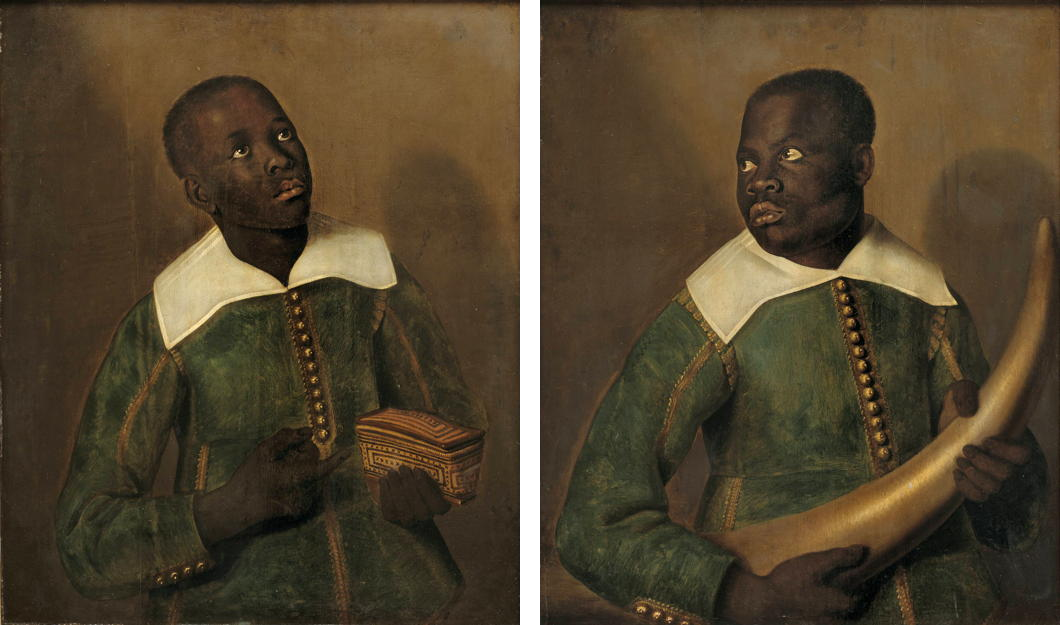
Horseshoe for Quebec’s Salon bleu
Refit will change seating plan in Quebec’s parliament chamber
An upcoming renovation to the Hôtel du parlement in Quebec City will also bring a change in the seating plan of the Assembly’s parliamentary chamber. Deputés agreed a moderate alteration to the current Westminster-style seating plan: a horseshoe shape will replace the crowded back two rows of desks with a curved arrangement.
The original clerks’ table designed by the building’s architect, Eugène-Étienne Taché, in 1886 will also be returned to centre-stage in the Salon bleu (formerly the Salon vert) of Quebec’s National Assembly. The room is also, I believe, the only parliamentary chamber to feature in a film by Alfred Hitchcock.
Renovations are scheduled to begin in January of next year, when deputés will start convening in the Salon rouge that formerly housed Quebec’s Legislative Council, abolished in 1968. (Quebec was the last Canadian province to abolish the upper house of its parliament.)

“The Salon bleu has a strong symbolic value for the Quebec nation,” claims Éric Montigny, professor of political science at Laval University (founded 1663).
“We must respect this tradition and evolve in a very, very gradual manner,” Professor Montigny told the Journal de Québec. “A parliament is not trivial.”
The Assembly numbered only sixty-five members when Taché’s edifice was completed in 1886, while today 125 deputés have to fit into the parliamentary chamber.
The new arrangement would make room for as many as 130 legislators, plus the Président in the speaker’s chair. It will also allow for a good number of the historic desks in the chamber to be retained.

Other potential arrangements were considered and rejected, including introducing a half-moon hemicycle akin to Paris, Washington, and other republican legislatures.
Prof Montigny dismissed claims that semicircular arrangements lead to more collaborative dialogue and constructive work between government and opposition parties:
“It’s an argument that is raised regularly, but I don’t know of any studies that will support this theory.”
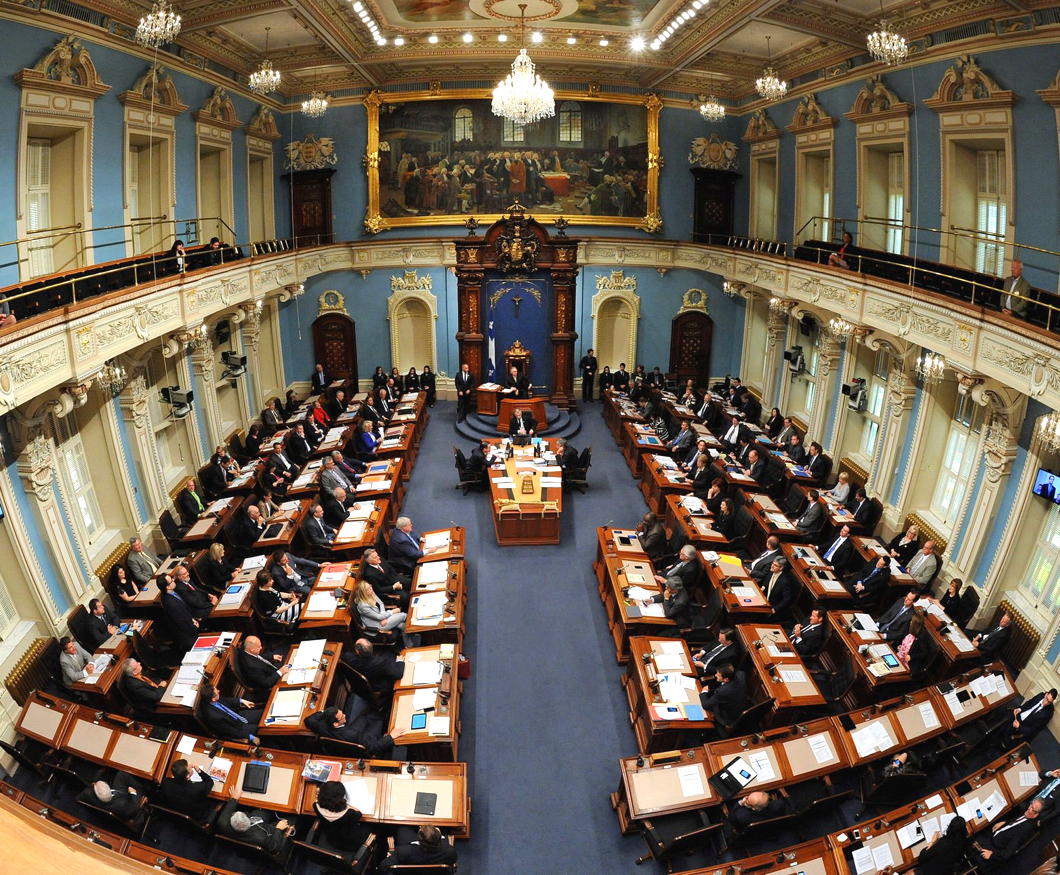
The most significant change to the chamber in recent years was the removal of the crucifix from above the président’s chair, first installed in 1936 by the giant of Quebec politics, premier Maurice Duplessis.
That crucifix, and its 1982 replacement, were removed in 2019 and are now displayed as historical artefacts in an ancillary part of the parliament building.
[NDLR: I wrote about the crucifix back in 2008.]
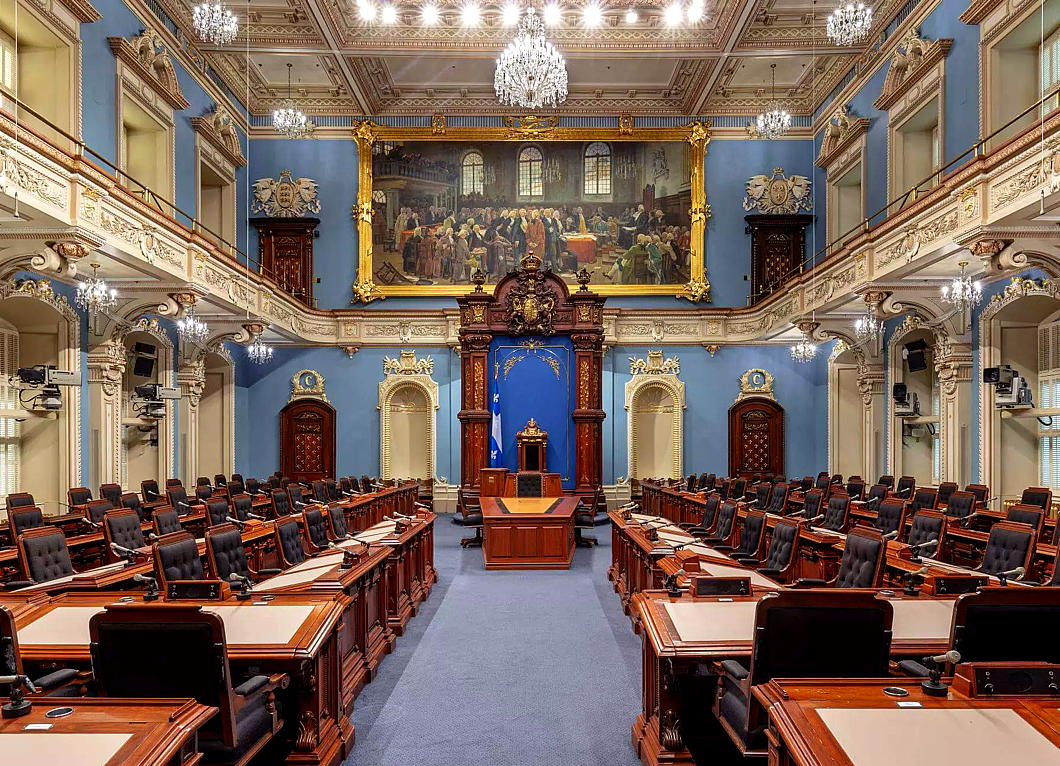
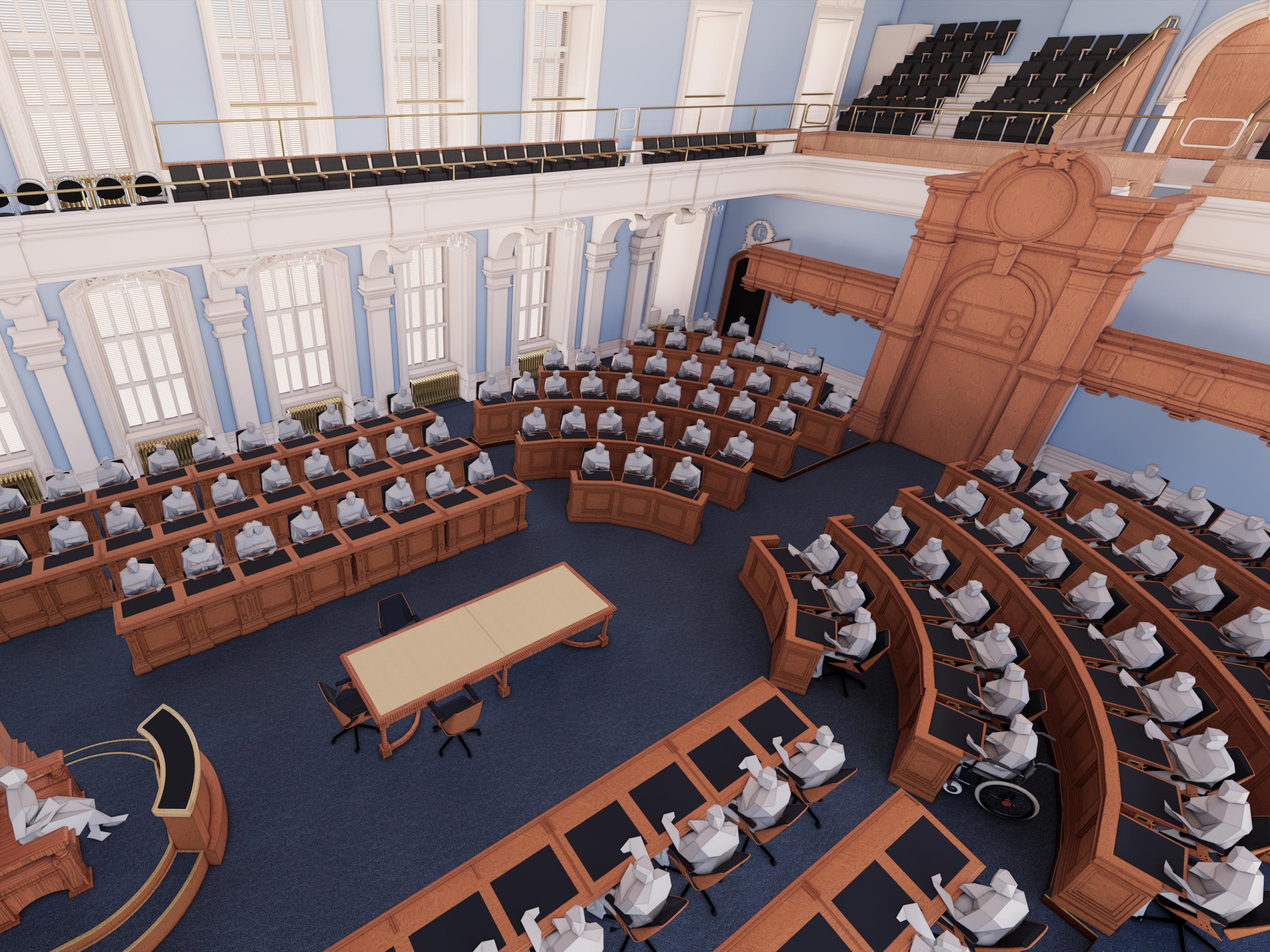
The horseshoe seating plan seems a happy compromise: Westminster-style parliaments — even those that are unicameral like Quebec’s — are honest about the antagonism between government and opposition, and the horseshoe preserves the antiphonal arrangement conducive to this, while rounding it off with a curve at the end.
For my part, I will be happy to see the removal of the arbitrary trapezoid of the modern clerks’ table (below) and its replacement by its historic predecessor.
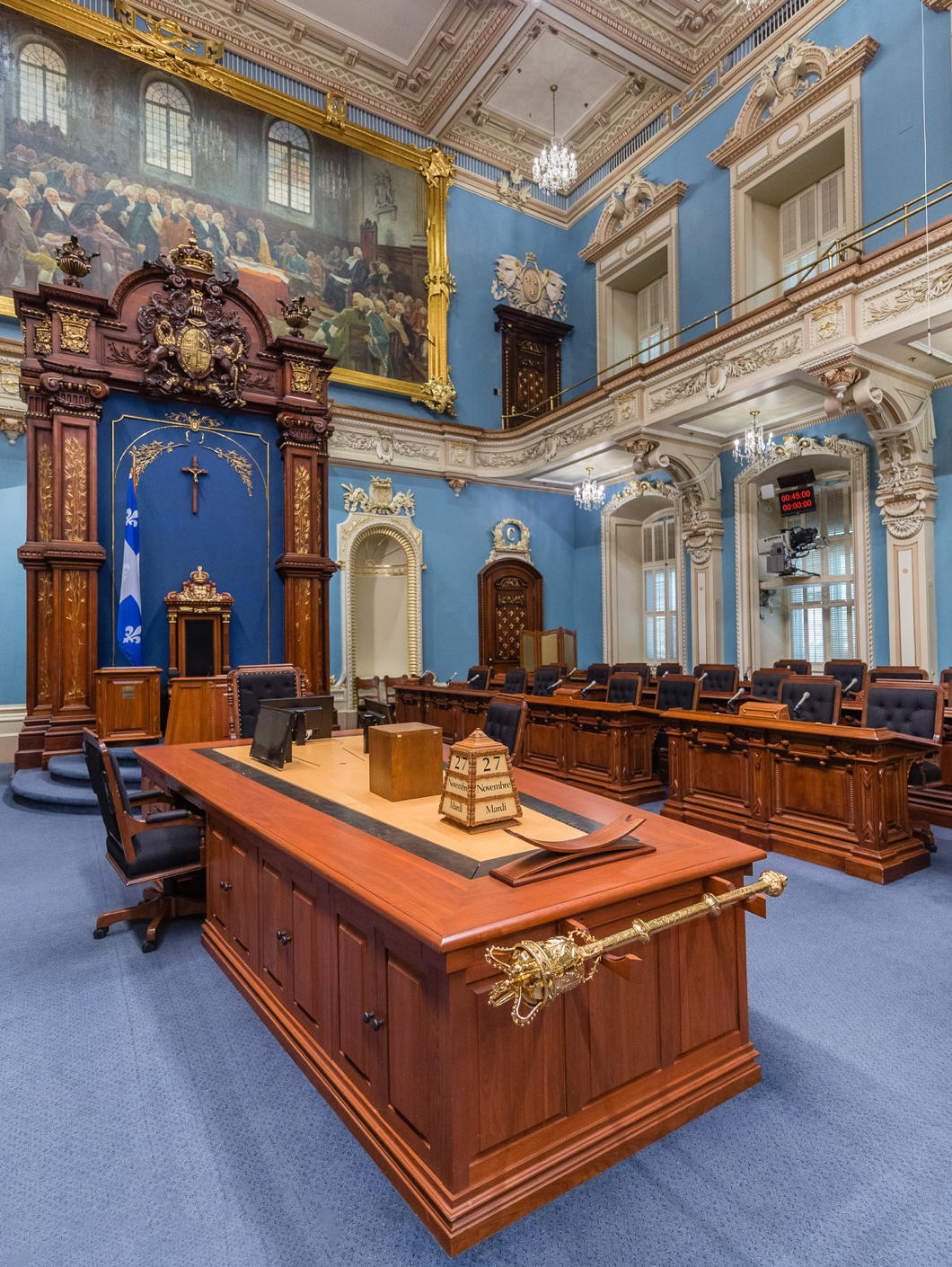
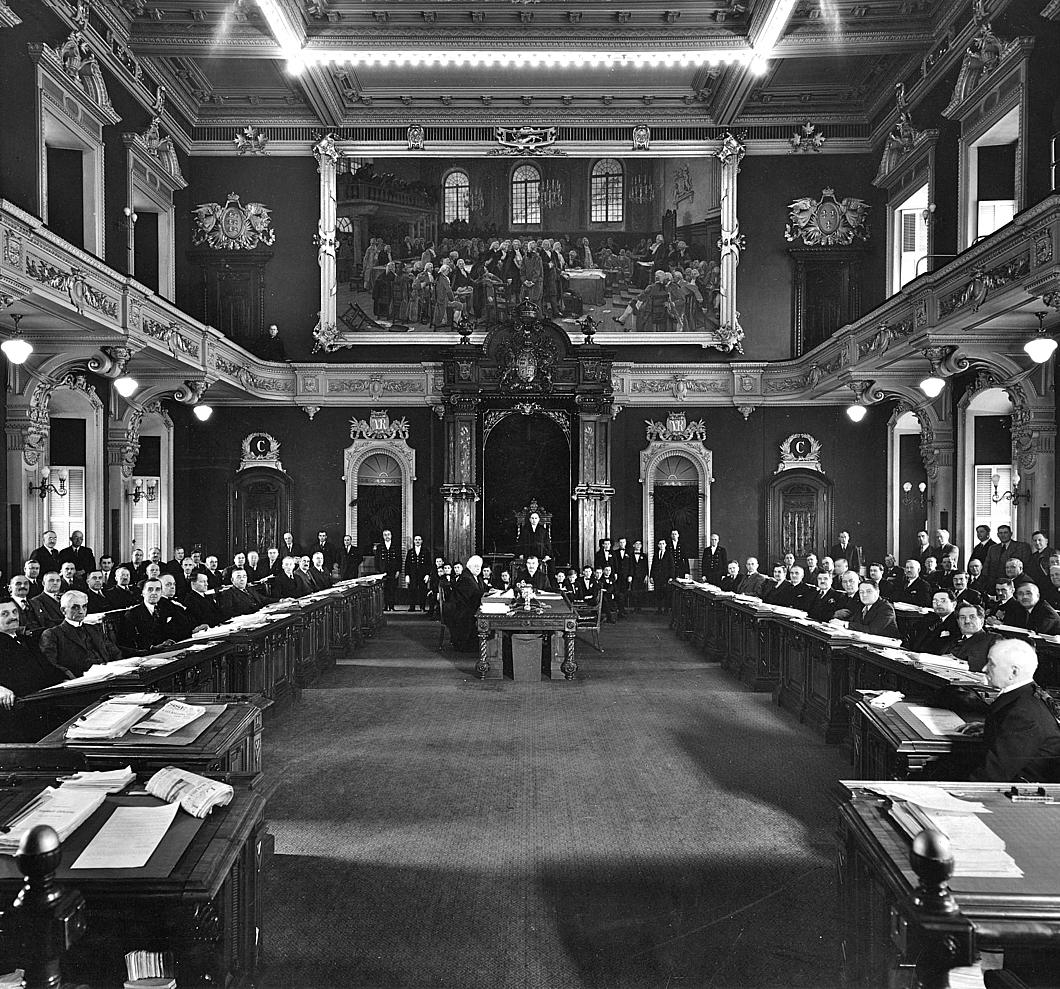
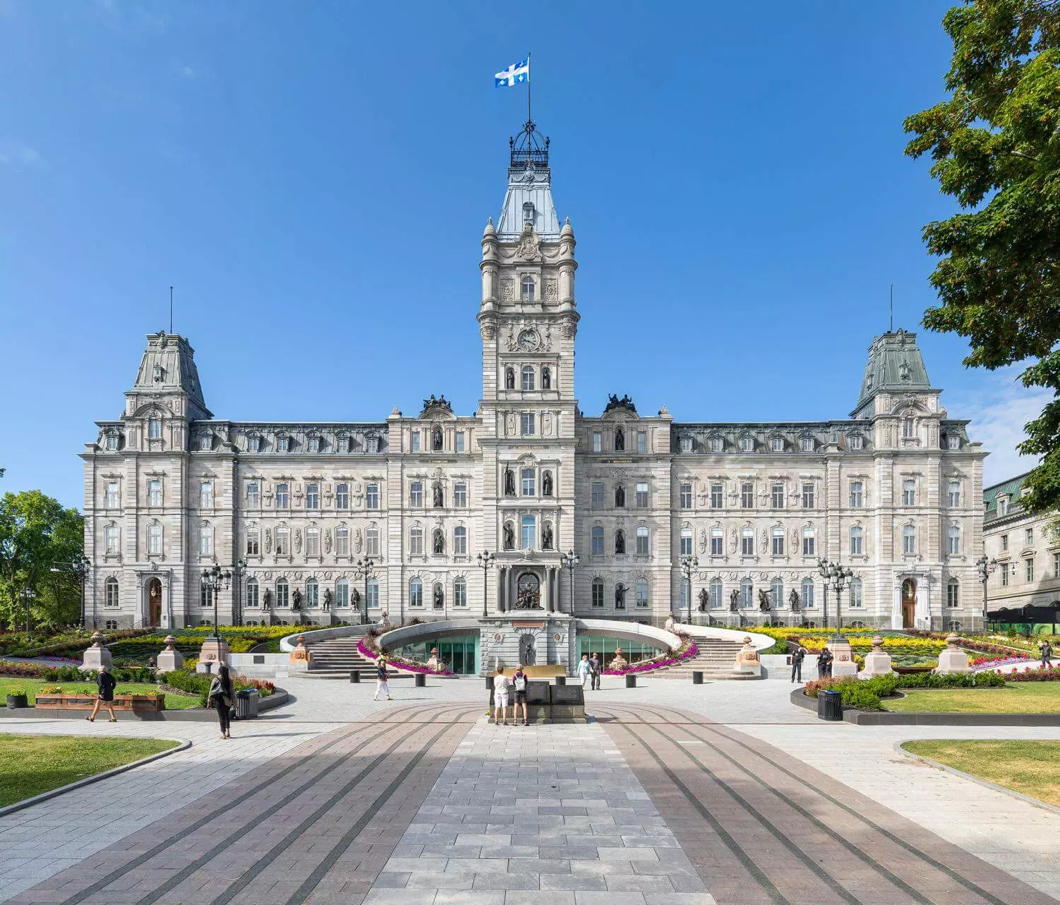
‘The first great commercial people’
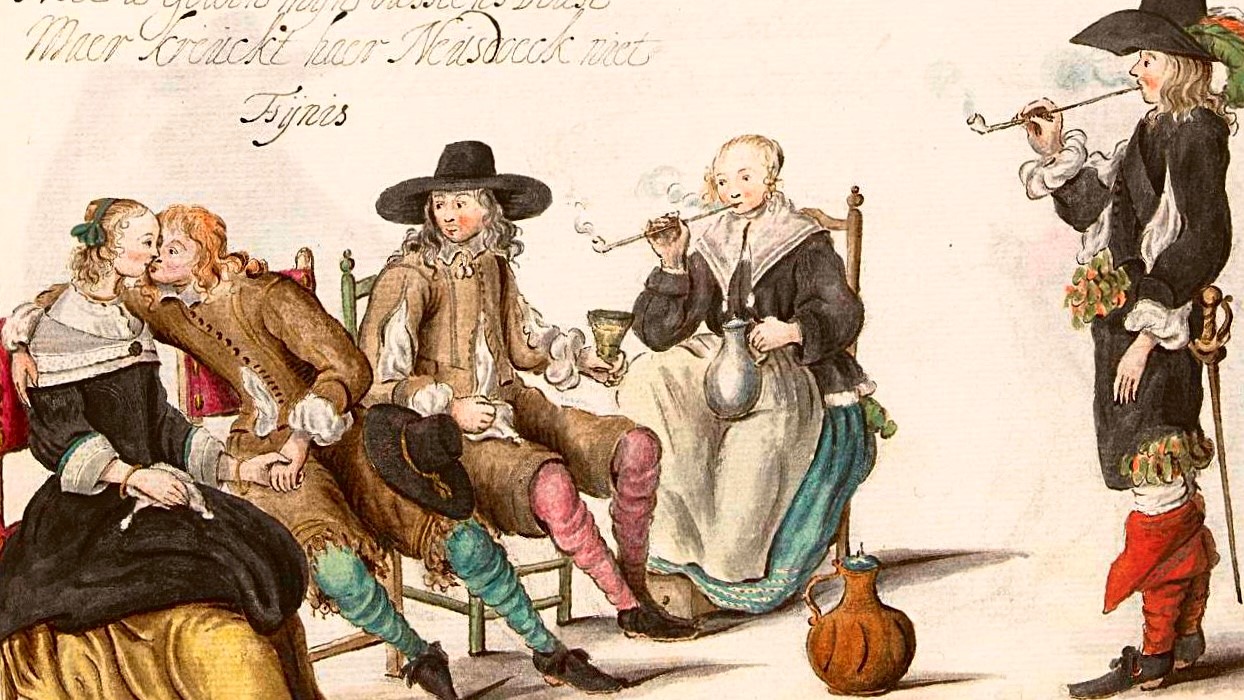
[…]
And it was for this same reason that they were unable to maintain that supremacy: for all its busy tenacity, their effort lacked a higher inspiration and, therefore, real vitality. Numerically, too, they were too few to be able for long to subdue and batten on half the world. It was the same maladjustment which turned Sweden’s taste of world-power into an episode: the national basis was too small.
There is no doubt that the cultural level was at that time higher in Holland than in the rest of Europe. The universities enjoyed an international reputation. Leyden in particular was accounted supreme in philology, political science, and natural philosophy.
It was in Holland that Descartes and Spinoza lived and worked, as also the famous philologists Heinsius and Vossius, the great jurist-philosopher Grotius, and the poet Vondel, whose dramas were imitated all the world over.
The Elzevir dynasty dominated the European book trade, and the Elzevir publications — duodecimo editions of the Bible, the classics, and prominent contemporaries— were appreciated in every library for their elegant beauty and their correctness.
At a time when illiteracy was still almost universal in other lands, nearly everyone in Holland could read and write; and Dutch culture and manners were rated so high that in the higher ranks of society a man’s education was considered incomplete unless he could say that he had been finished off in Holland, “civilisé en Hollande”.
The colonising activities of the Dutch set in practically with the new century, and fill the first two-thirds of it. They quickly gained a footing in all quarters of the world.
On the north-east coast of South America they took possession of Guiana, and in North America they founded the New Amsterdam which was later to become New York: centuries afterwards the Dutch or “Knickerbocker” families still constituted a sort of aristocracy.
They spread themselves over the southern-most tip of Africa, where they became known as Boers, and imported from there the excellent Cape wines.
One whole continent bore their name: namely, New Holland — the later Australia — round which Tasman was the first to sail. Tasman did not, however, penetrate to the interior, but supposed Tasmania (which was named after him) to be a peninsula.
The Dutch were also the first to land on the southern extremity of America, which was named Cape Horn (Hoorn) after the birthplace of the discoverer.
Their greatest acquisitions, however, were in the Sunda islands: Sumatra, Java, Borneo, Celebes, and the Moluccas all came into their possession.
Extending out to Ceylon and Further India, by 1610 they had already founded their main base, Batavia, with its magnificent trade-buildings. In fact they ruled over the whole Indian archipelago. For a time they even held Brazil.
With all this, they never, in the true sense of the word, colonised, but merely set up trading centres, peripheral depots, with forts and factories, intended only for the economic exploitation of the country and the protection of the sea routes.
Nowhere did they succeed in making real conquests; for these, as we said before, they had not the necessary population, nor had they, as a purely commercial people, the smallest interest in doing so.
Their chief exports were costly spices, rice, and tea. To the last-named Europe accustomed itself but slowly. At the English Court it first appeared in 1664 and was not considered very palatable — for it was served as a vegetable. In France it was known a generation earlier, but even there it had to make its way slowly through a mountain of prejudice.
Moreover, its consumption was limited by the Dutch themselves, who, having a monopoly to export it, raised the prices to the level of sheer extortion. This was in fact their normal procedure throughout, and they did not shrink from the most infamous practices, such as the burning of large pepper and nutmeg nurseries and the sinking of whole cargoes.
Their home production, too, dominated the European market with its numerous specialities. All the world bought their clay pipes; a fishing fleet of more than two thousand vessels supplied the whole of Europe with herrings; and from Delft, the main seal of the china industry, the popular blue and white glazed jugs, dishes, and table implements, tiles, stoves, and fancy figures went forth to all points of the compass.
One Dutch article that was in universal demand was the tulip bulb. It became a sport and a science to breed this gorgeous flower in ever new colours, forms, and patterns. Immense tulip farms covered the ground in Holland, and amateurs or speculators would pay the price of an estate for a single rare fancy breed.
The get-rich-quick people threw themselves into the “option” game: that is, they sold costly specimens, which often existed only in imagination, against future delivery, paying only the difference between the agreed price and the price quoted on settling day. It is indeed the Dutch who may claim the dubious honour of having invented the modem stock-exchange system with all the manipulative practices that we know today.
The great tulip crash of 1637, which was the result of all this bubble trading, is the first stock-exchange collapse in the history of the world. The shares of the Dutch trading companies, in particular the East Indian (floated in 1602) and the West Indian (1621), were the first stocks to be handled in the stock-broking manner (their par value speedily tripled itself, and the dividends rose to twenty per cent and higher); and the Amsterdam Exchange, which ruled the world, became the finishing school for the game of “bull” and “bear.”
Then, too, during the first half of the seventeenth century, the Dutch were Europe’s sole middlemen: their mercantile marine was three times as big as that of all other countries.
And although — or indeed because — the whole world depended on it, there arose a bitter hatred against it (contrasting strangely with the extravagant admiration accorded to their manners and comforts) which was intensified by the brutal and reckless extremes to which they went in maintaining their advantage. “Trade must be free everywhere, up to the gates of hell,” was their supreme article of faith.
But by free trade they meant freedom for themselves — in other words, a ruthlessly exploited monopoly. This was also the kind of freedom that Grotius meant when in his famous treatise on international law, Mare liberum, he stated that the discovery of foreign countries does not in itself give right of possession, and that the sea by its very nature is outside all possession and is the property of everyone.
But as the sea was in fact in the possession of the Dutch, this liberal philosophy was no more than the historical mask for an economic terrorism.
In this wise the “United States” became the richest and most prosperous country of Europe. There was so much money that the rate of interest was only two to three per cent.
But although naturally the common people lived under far better conditions than elsewhere, the great profits were made by a comparatively small oligarchy of hard, fat money-bags, the so-called “Regent-families” who were in almost absolute control — since they filled all the leading posts in the government, the judicature, and the colonies — and looked down on the common man, the “Jan Hagel,” as contemptuously as did the aristocrats of other countries.
Opposed to them was the party of the Oranges, who by an unwritten law held the hereditary town governorships; their aim was indeed a legitimate monarchy, but they were nevertheless far more democratic in their ideas than the moneyed class, and were therefore beloved of the people. The best talent, military and technical, gathered about them. The first strategists of the age were on their staff. They nurtured a generation of virtuosi in siege warfare, privateering, artillery, and engineering science. The water-network created by them, which covered the whole of Holland, was considered a world marvel. They were masters, too, of diplomacy. …
St Paul’s: Before and After the War
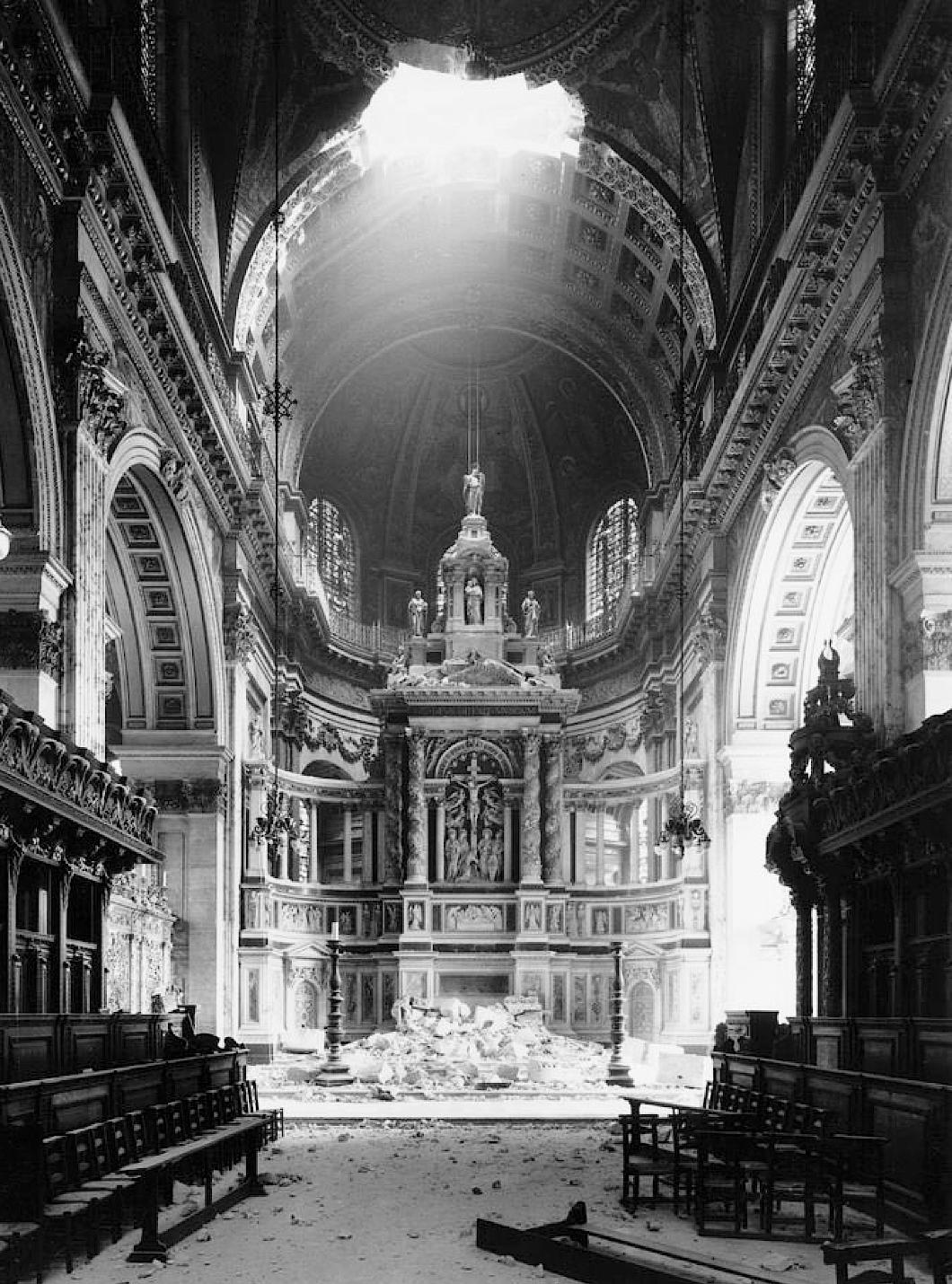
Wren’s post-Fire St Paul’s Cathedral was an icon of resistance to German aggression and an emblem of survival during the Blitz, but while the dome survived the church did suffer damage: A bomb fell threw the roof of the east end on the evening of 10 October 1940, tumbling masonry and destroying the high altar.
Despite the reredos remaining largely intact, as can be seen in the photograph above, it was decided to remove it and rebuild the High Altar under a baldacchino as Sir Christopher Wren had intended.
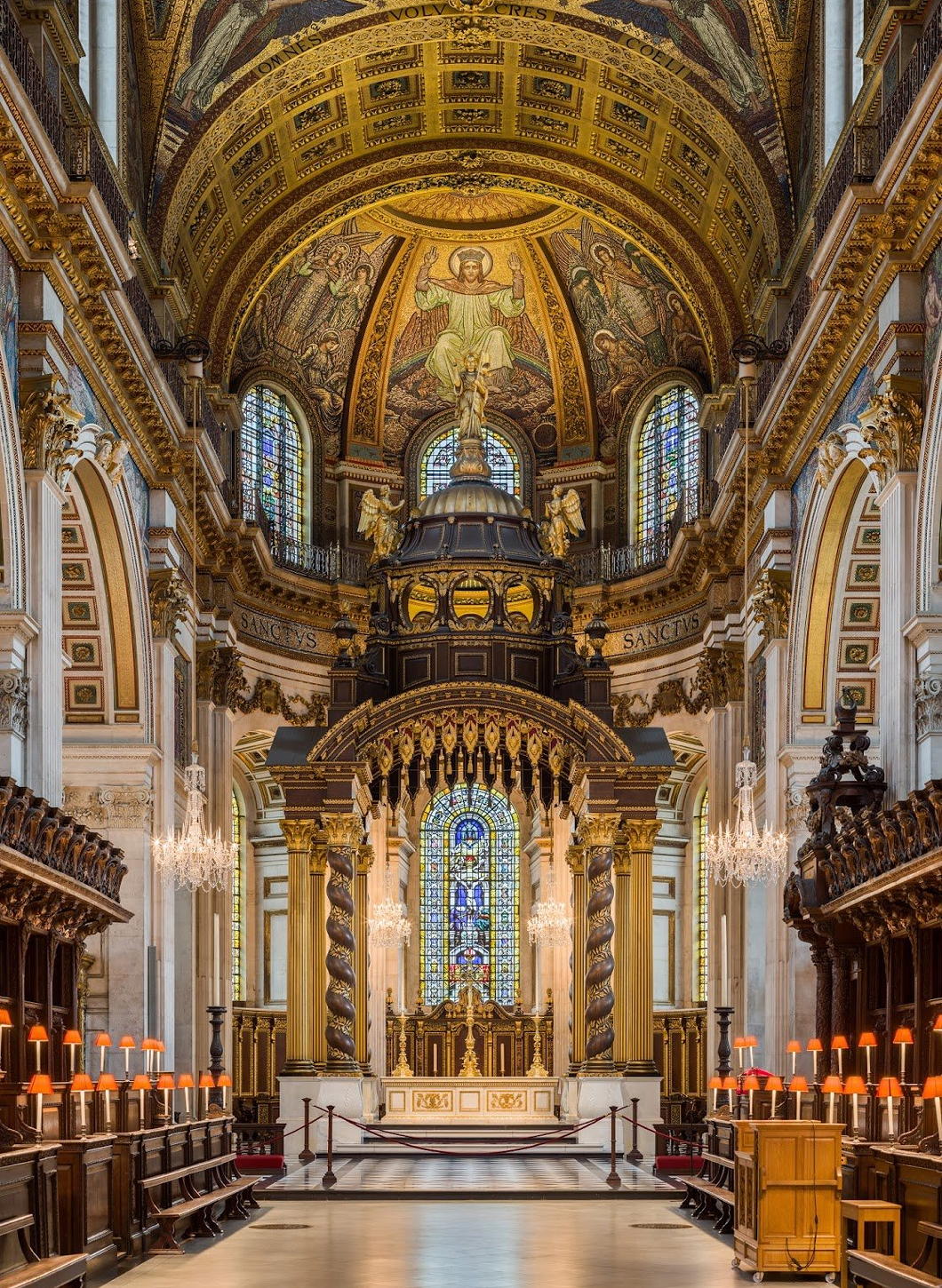
In 1958 the new High Altar, designed by W Godfrey Allen and Steven Dykes Bower, was dedicated with an American Memorial Chapel behind it.
This was proposed by the Dean of St Paul’s and General Eisenhower volunteered to raise money for it in the United States.
The Dean turned down the Supreme Commander’s offer, saying that this would be paid for by Britons as an appreciation of the American sacrifice during our common struggle.
A roll of honour lists the names of the 28,000 Americans who gave their lives while stationed from Great Britain.
Perhaps more intriguing than either view is the one below of the interior of St Paul’s before the Victorian scheme for the High Altar was executed.
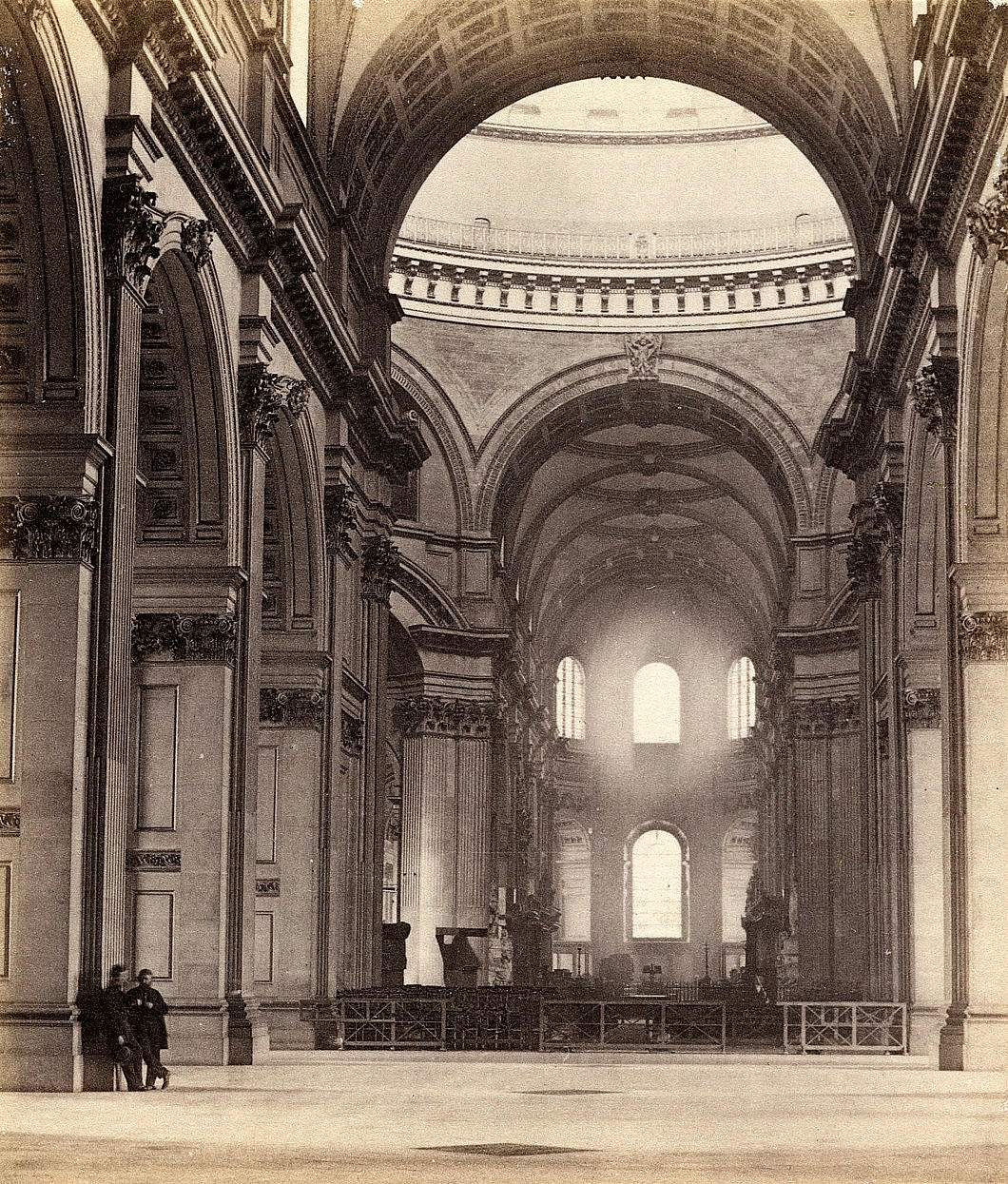
The Ukrainians’ Secret Weapon
For those looking for an explanation as to the notable success of the Ukrainians on the battlefield in the current unpleasantness taking place in their country, look no further.
In a thread of tweets, the biblophile Incunabula reveals the Ukraine’s secret weapon: the Peresopnytsia Gospels (Пересопницьке Євангеліє).
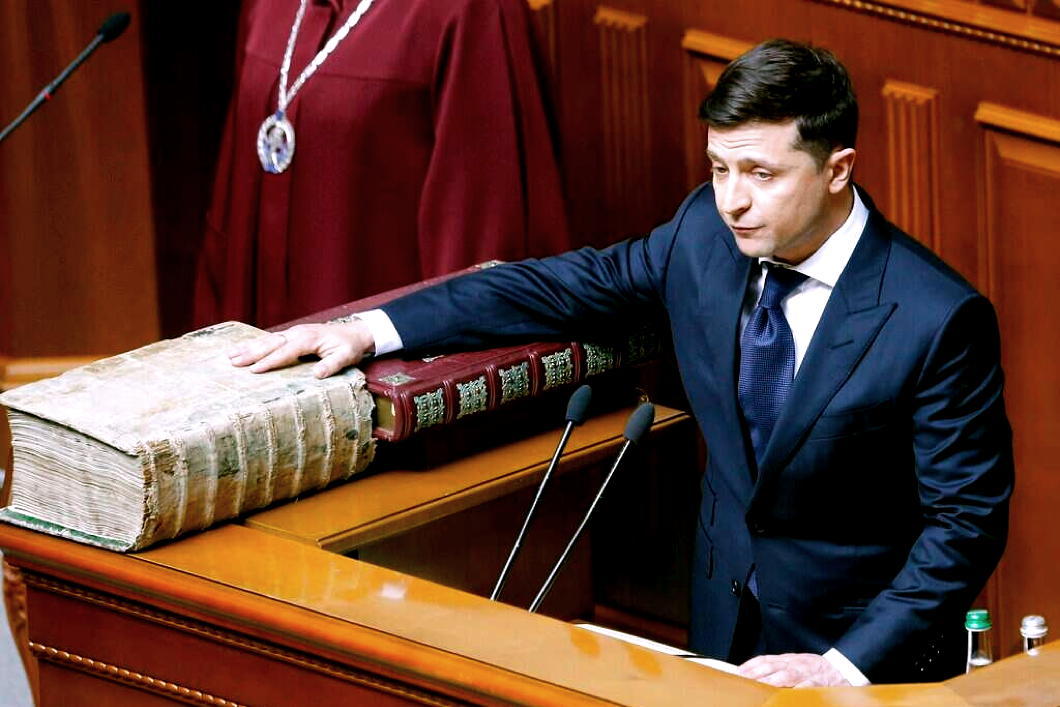
“All six Ukrainian Presidents since 1991,” Incunabula writes, “including Volodymyr Zelensky, have taken the oath of office on this book: the sixteenth-century Peresopnytsia Gospels, one of the most remarkably illuminated of all surviving East Slavic manuscripts.”
“The Peresopnytsia Gospels were written between 15 August 1556 and 29 August 1561, at the Monastery of the Holy Trinity in Iziaslav, and the Monastery of the Mother of God in Peresopnytsia, Volyn.”
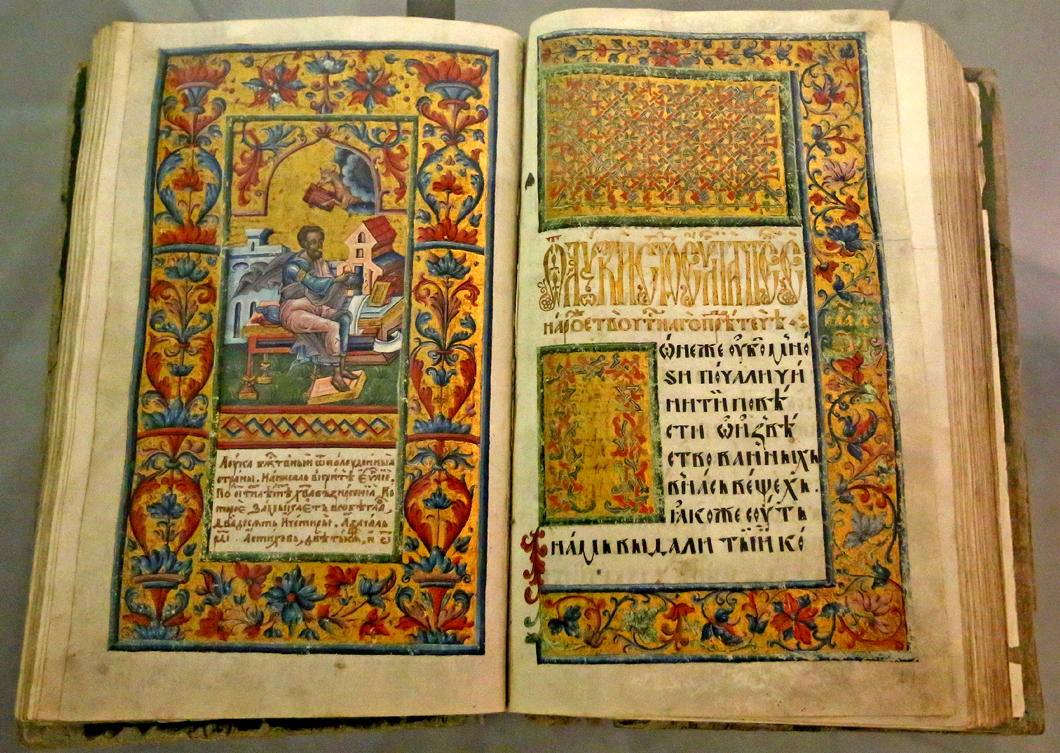
“This manuscript is the earliest complete surviving example of a vernacular Old Ukrainian translation of the Gospels. Its richly ornamented miniatures belong to the very highest achievements of the artistic tradition of the Ukrainian and Eastern Slavonic icon school.”
“The Peresopnytsya Gospels were commissioned in 1556 by Princess Nastacia Yuriyivna Zheslavska-Holshanska of Volyn, and her daughter and her son-in-law, Yevdokiya and Ivan Fedorovych Czartoryski. After its completion the book was kept in the Peresopnytsya Monastery.” (more…)
Irving’s Sunnyside
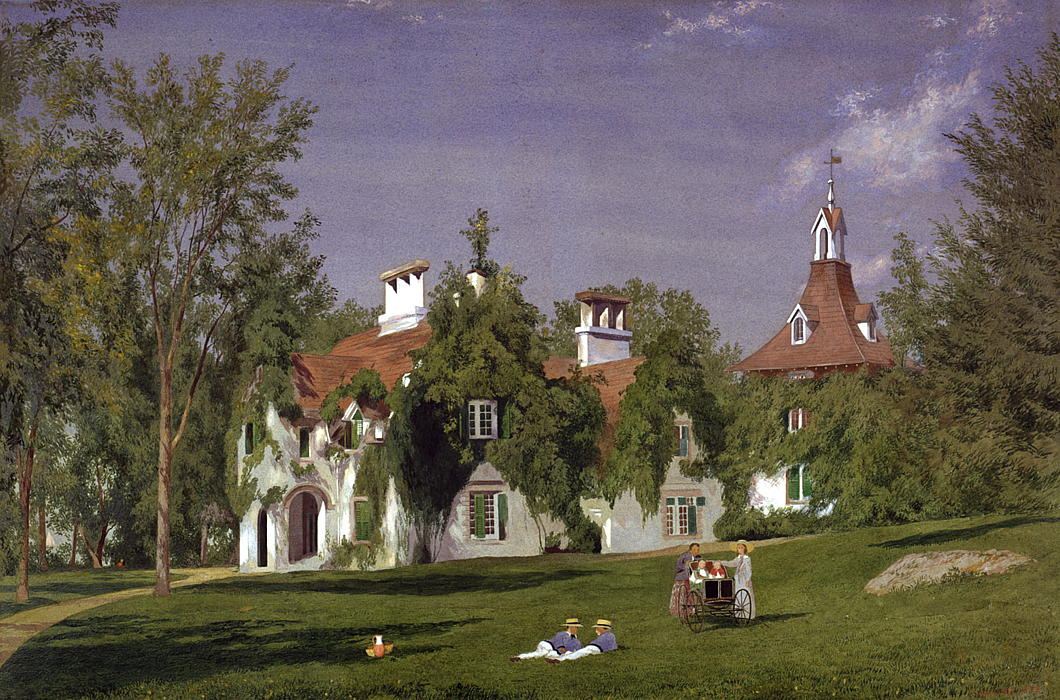
From the Westchester Herald (as reprinted in the Times of London, 24 April 1835):
On the premises just mentioned there is still standing an old stone house, built in the ancient Dutch style of architecture, during the French war, by Wolfred Acker, and afterwards purchased by Van Tassel, one at least of whose descendants has been immortalized in story by the racy pen of its present gifted proprietor.
It is the identical house at which was assembled the memorable tea-party, described in the legend of Sleepy Hollow, on that disastrous night when the ill-starred Ichabod was rejected by the fair Katrina, and also encountered the fearful companionship of Brom Bones in the character of the headless Hessian.
The characters in this delectable drama are mostly known to our readers; but time, that tells all tales, enables us to add one item more, which is, that the original of the sagacious schoolmaster was not the individual generally considered as such, who still resides in this country, but Jesse Martin, a gentleman who bore the birchen sway at the period of which the legend speaks, and who afterwards removed further up the Hudson, and is since deceased.
The location is a most delightfully secluded spot, eminently suited to the musings and mastery of mind; and it is the design of the proprietor, without changing the style or aspect of the premises, to put them in complete repair, and occupy them as a place of retirement and repose from the business and bustle of the world.
Special Mission to Rome
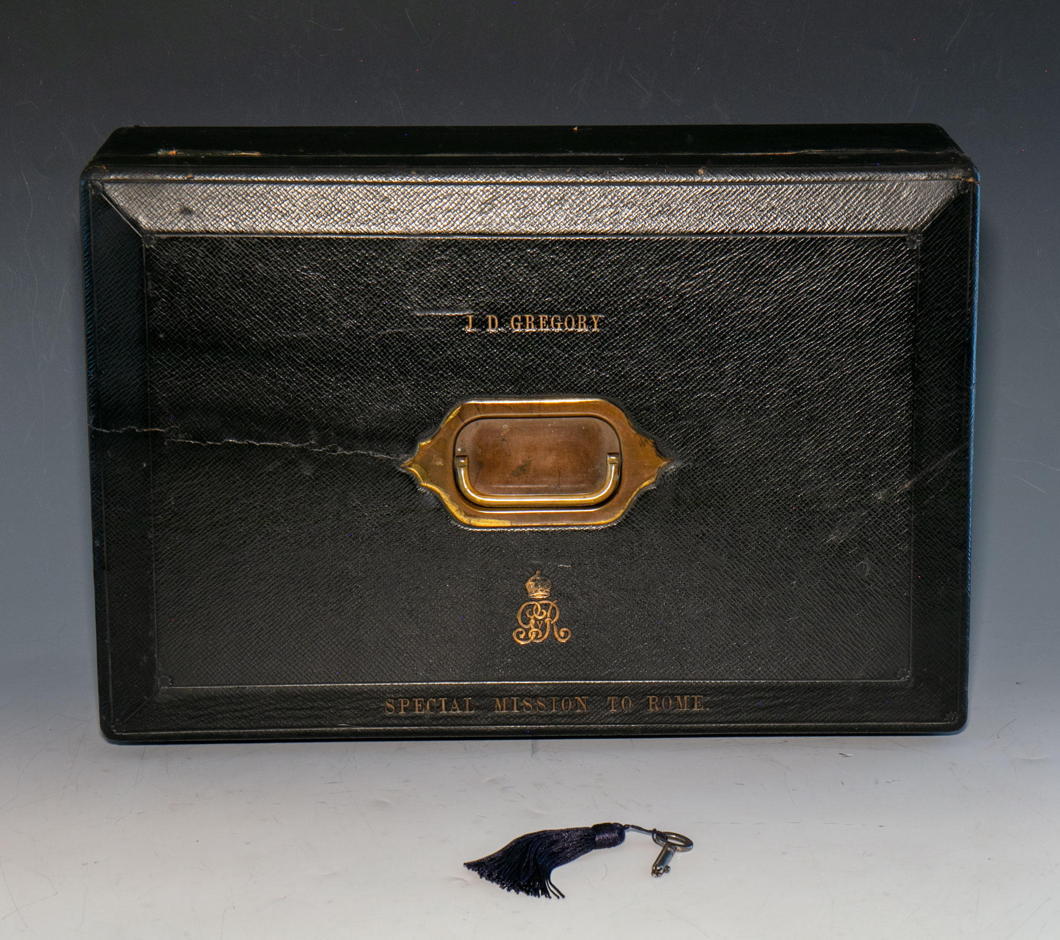
RELATIONS BETWEEN THE Court of St James’s and the Holy See have evolved in the many centuries since the Henrician usurpation. At times, such as during the Napoleonic unpleasantness, the interests of London and the Vatican were very closely aligned — despite the lack of full formal diplomatic relations. Later in the nineteenth century Lord Odo Russell was assigned to the British legation in Florence but resided at Rome as an unofficial envoy to the Pope.
It wasn’t until 1914 that the United Kingdom sent a formal mission to the Vatican, but this was a unique and un-reciprocated diplomatic endeavour — a full exchange of ambassadors would have to wait until 1982. (Until then, the Pope was represented in London only by an apostolic delegate to the country’s Catholic hierarchy rather than any representative to the Crown and its Government.)
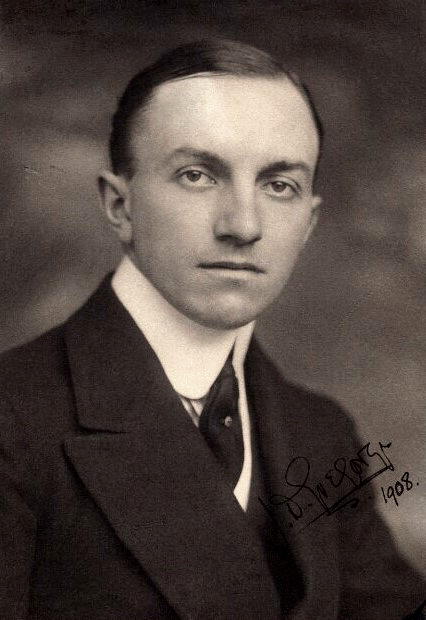 Within a year of the Special Mission to Rome being established, John Duncan Gregory (later appointed CB and CMG) was assigned to it. A diplomat since 1902 who had previously worked in Vienna and Bucharest, he was one of the central figures in the curious ‘Francs Affair’ of 1928, when two British diplomats were believed to have unduly abused their positions to speculate in currency. Despite being cleared of illegality, J.D. Gregory was dismissed from his diplomatic posting — though he was later rehabilitated.
Within a year of the Special Mission to Rome being established, John Duncan Gregory (later appointed CB and CMG) was assigned to it. A diplomat since 1902 who had previously worked in Vienna and Bucharest, he was one of the central figures in the curious ‘Francs Affair’ of 1928, when two British diplomats were believed to have unduly abused their positions to speculate in currency. Despite being cleared of illegality, J.D. Gregory was dismissed from his diplomatic posting — though he was later rehabilitated.
If there are any enthusiasts of the curious subcategory of accoutrement known as the despatch box, J.D. Gregory’s one dating from his time in Rome is currently up for sale from the antiques dealer Gerald Mathias.
It was manufactured by John Peck & Son of Nelson Square, Blackfriars, Southwark — not very far at all from me as it happens. (more…)
175 Years of St George’s Cathedral
ONE HUNDRED AND SEVENTY-FIVE years ago, at a time of great uncertainty in Europe, St George’s in Southwark was opened solemnly by Bishop Wiseman — writes the Cathedral Archivist Melanie Bunch. The ceremony was attended by thirteen other bishops in all their finery, of whom four were foreign. Hundreds of clergy of all ranks were in the procession and many of the Catholic aristocracy of England were present. The music was magnificent, the choir including professional singers.
Pugin’s neo-Gothic church was impressive but not finished, and it was not to be a cathedral for another four years. Dr Wiseman, who was both the chief celebrant and the preacher, was bishop of a titular see, as the Catholic dioceses of England and Wales did not yet exist. Nonetheless the opening marked a significant stage in the revival of the Catholic Church in this region. The spur had been the spiritual needs of the poor Irish who had long formed settled communities in parts of London and other cities. The plans for the church had been drawn up in 1839 – before the severity of the famine in Ireland, which began in 1845, could have been foreseen. Some had considered the size of the new church unnecessary, but it turned out to be providential, as immigration from Ireland to this locality and elsewhere was reaching a peak at this time.
The extraordinary turmoil in Europe that had started early in the year in Sicily could not be ignored. In February Louis-Philippe was dethroned in France. There was anxiety that revolution might cross the Channel. Pugin decided that he should obtain muskets to defend his church of St Augustine under construction in Ramsgate. Revolution spread to German and Italian states and countries under Austrian rule. For four days in late June, there was a brief and bloody civil uprising in Paris.
While Europe was ablaze, London was calm, and the opening went ahead. In his homily, Wiseman praised God for all his mercies to this country. From our perspective, we might have expected that he would have spoken about the dark days of persecution, or at least the struggles of the recent past to get such a large church built, constantly hampered by lack of funds. Rev. Dr Thomas Doyle, whom we honour as the founder of the Cathedral, was present and assisting at the Mass, but his courage, faith, and dogged persistence over many years were not acknowledged on this occasion.
We might remember that a Catholic event like this had not been witnessed in England since the Reformation, seemingly prompting Wiseman to take the opportunity to explain to the non-Catholics present that the ceremony and display of the Catholic Church came from a desire to show greater respect for God. To the foreign bishops he said that their presence proved the unity and diversity of the Church. At the end of his homily, Wiseman caused a sensation by reading out a letter from the Archbishop of Paris, Mgr Affre, regretting that he could not attend the opening. By then it was known that he had already died from wounds received on the barricades while he was trying to mediate with the rebels. Wiseman called him a martyr.
Among others who never saw the opening are some who served St George’s mission with Thomas Doyle at the earlier chapel in London Road. Three of them had died before their time, only a few years before, from diseases endemic among their flock. We remember them and all who have served the Cathedral with gratitude. At the time of the opening, St George’s was the largest Catholic church in London, and for the next fifty years was to be the centre of Catholic life in the metropolis. Much has changed since, including the rebuilding of the Cathedral, but we give thanks to Almighty God who continues to sustain it. (more…)
Sibiu/Hermannstadt
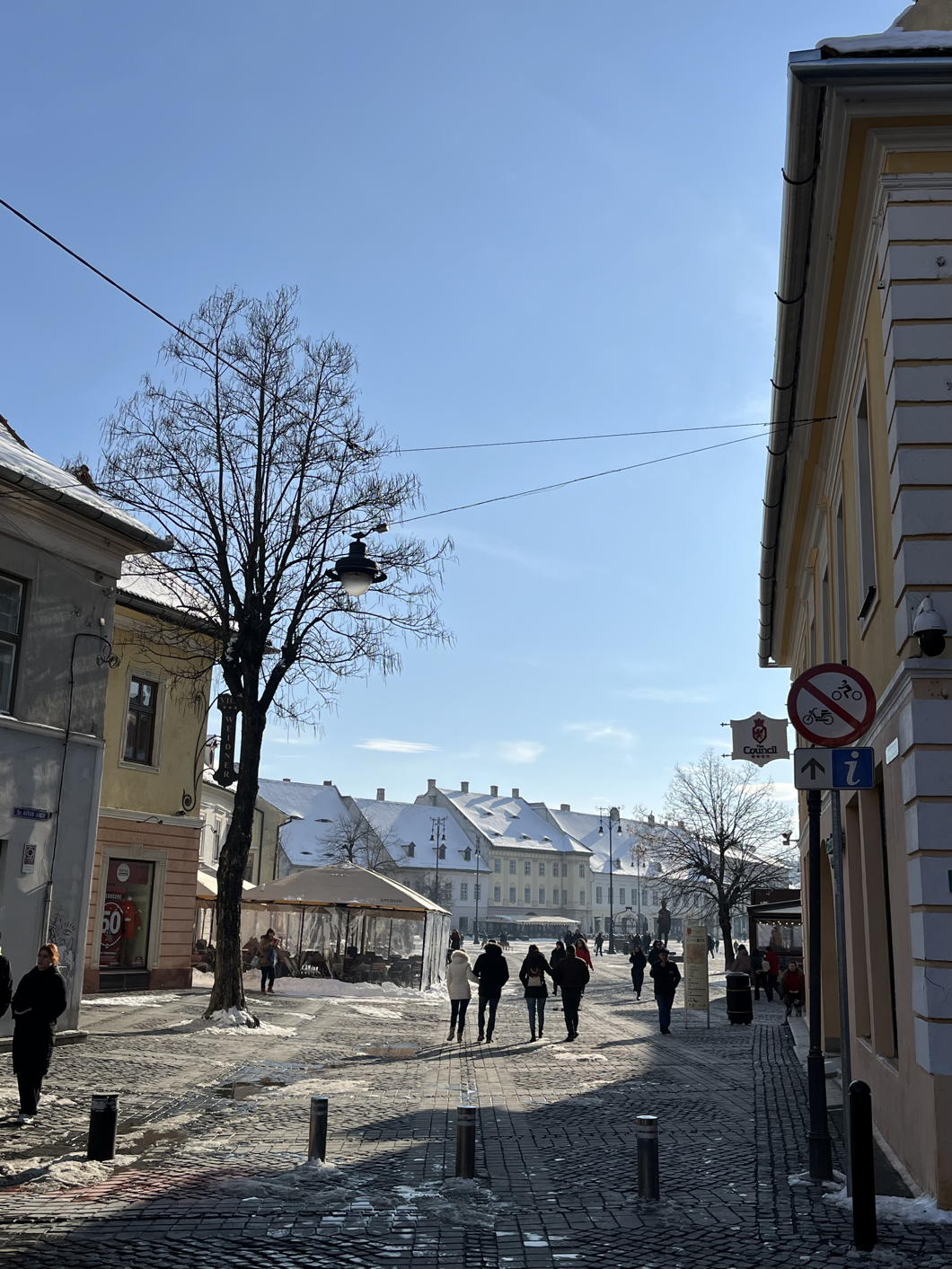
SIBIU’s name comes from a Bulgar-Turkic root word meaning “rejoice”, and having spent a few days in the city I can see why. It is handsome, clean, and clearly well looked after — perhaps well loved is the better term.
Unsurprisingly, the mayor partly responsible for this state of affairs was much vaunted for his efforts, to the extent that the Romanians elected him president of the entire country (and this despite him being an ethnic German).
As in all of Transylvania, there is a long history of mixture here, and while the past hundred years have seen a massive collapse in the Hungarian, German, and Jewish populations, many of them persevere all the same, sometimes even flourishing.
Hungarians are the largest and most visible minority in Transylvania — once the dominant people of this province of the Crown of St Stephen — but here in Sibiu they play second-fiddle to the Germans.
Arriving in the Church of the Holy Trinity in the great square for the Hungarian Mass on Sunday, the congregation at the Mass in German preceding it was still filtering away and clearly is the main event of the parish.
The Germans — or Saxons as they are often known — are today under two per cent of the city’s population but, as elsewhere, the Teutonic reputation for competence and efficiency means that a great many ethnic Romanians vote for the Germans’ party, the Democratic Forum of Germans in Romania.
When mayor Klaus Iohannis was elected to the Romanian presidency, he was succeeded as mayor by another member of the German community, the rather elegant Astrid Fodor.
But what of the ethnic Romanians that today make up ninety-five per cent of Sibiu’s townfolk? They are anything but ethnic chauvinists, and seem keen to preserve the traditions of the city and the province, and especially to highlight Sibiu’s distinctiveness. Those I had the pleasure of interacting with were effortlessly warm, courteous, and inviting. Their language is alluringly if mistakenly familiar.
Curiously, the Grand Duchy of Luxembourg maintains a consulate here in Sibiu / Hermannstadt with the ostensible excuse that the former German dialect of the town is a close relative of Luxemburgish. The connection bore fruit when Sibiu and Luxembourg City shared the honour of being European City of Culture in 2007.
It was around that time that Forbes magazine rated Sibiu as the seventh most idyllic place to live in Europe — ahead of Rome and just behind Budapest. While such ratings are always arbitrary, I can’t help but share their desire to praise this felicitous city. (more…)
A Realm That Never Was
The United Kingdom of the Rio de la Plata, Chile, and Peru
If we give in to temptation and attempt to see things without the benefit of hindsight, Brazil’s path to independence as a monarchy is less surprising than the fact that Argentina didn’t pursue a similar trajectory. After all: Argentina’s ‘Liberator’, José de San Martín, was himself a monarchist, as was Manuel Belgrano.
Belgrano’s project was to unite the Provinces of the River Plate with Chile and the old viceroyalty of Peru in one united kingdom under a Borbón king. This was to be the Infante Don Francisco de Paula, the youngest son of Charles IV of Spain, but the Spanish king ardently refused to yield his throne’s sovereignty over the new world, nor to allow any of his offspring to take part in the various projects for local monarchies.
When that failed, Belgrano proposed to the Congress of Tucumán that they crown an Incan as king. San Martín, Güemes, and others supported this, but Buenos Aires resisted the plan. They proposed instead to crown Don Sebastián, a Spanish prince living in Rio de Janeiro with his maternal grandfather, King João VI of Portugal.
João thought the scheme would end up injurious to Portugal’s interests and so put the kibosh on it.
And don’t get us started on Carlotism, which was a whole ’nother pile of tricks.

Belgrano’s monarchic project in its 1815 iteration was to unite the provinces of the River Plate with Chile and the old viceroyalty of Peru to create a single realm out of these Spanish-speaking territories.
He even drafted a constitution for the United Kingdom of the Rio de la Plata, Chile, and Peru, which is rudimentarily translated into English below. This even went so far as to specify the coat of arms and flag of the kingdom.
The best history covering these unconsummated plans remains Bernado Lozier Almazán’s 2011 book Proyectos monárquicos en el Río de la Plata 1808-1825: Los reyes que no fueron which sadly has not yet been translated into English.
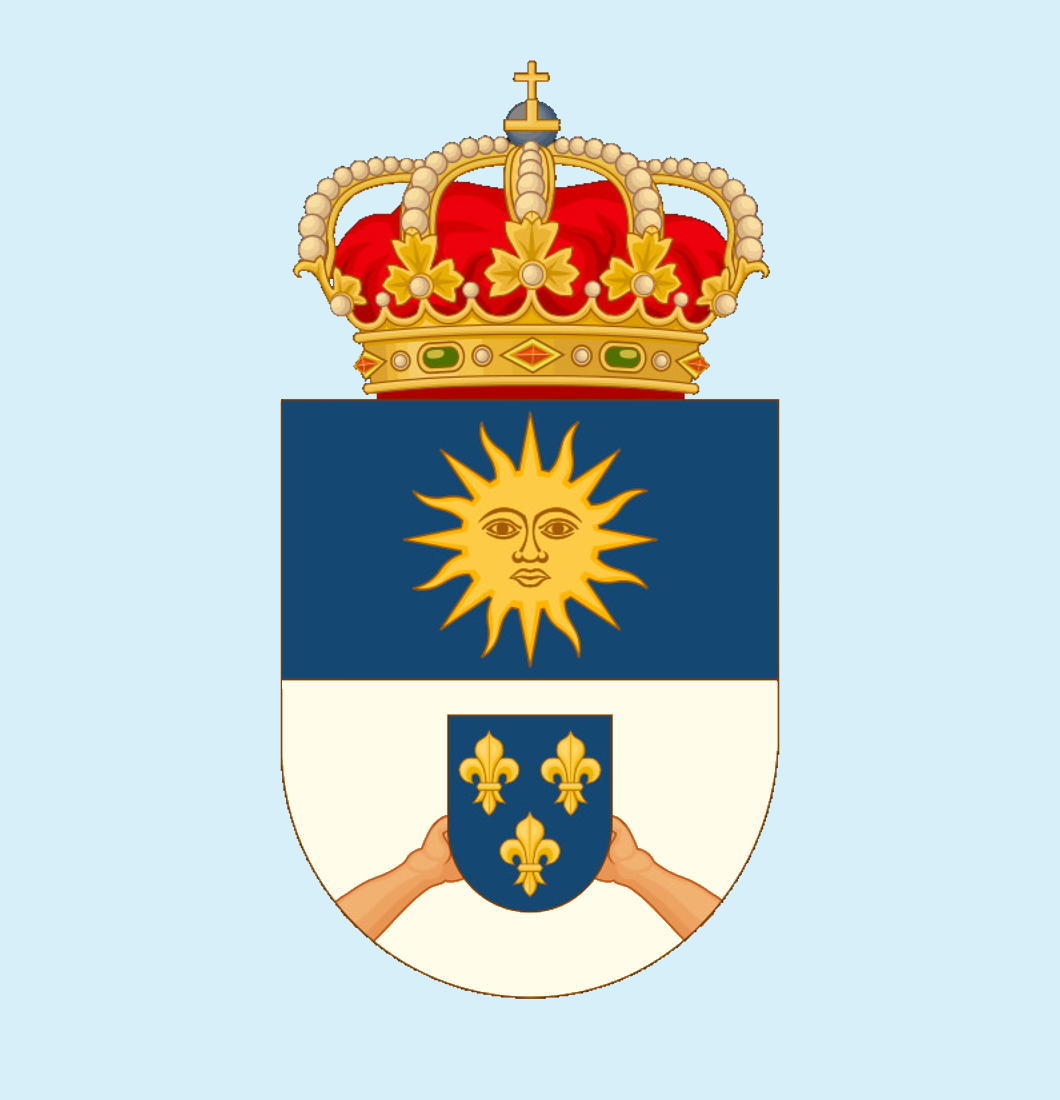
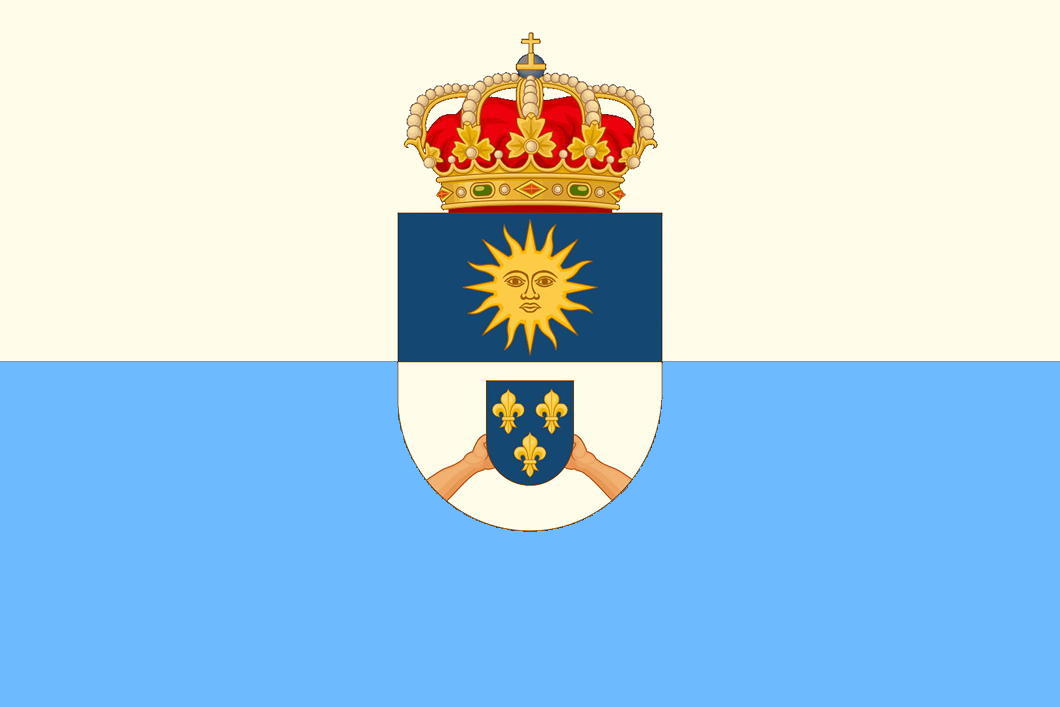
Article 1 — The new Monarchy of South America will have the name of the United Kingdom of the Río de la Plata, Peru, and Chile; its coat of arms will be a shield that will be divided into blue and silver fields; In the blue that will occupy the upper part, the image of the Sun will be placed, and in Silver two arms with their hands that will hold the three flowers of the emblems of My Royal Family; surmounted by the Royal Crown, and will have as supporters a tiger and a llama. Its flag will be white and light blue.
Article 2 — The Crown will be hereditary in order of proximity in the lines of agnation and cognation.
Article 3 — If, God forbid, the current King dies without succession, his rights will revert to me so that with the agreement and consent of the Legislative Body I choose another Sovereign from my Royal Family; but, if I no longer exist, said Chambers will have the power to elect one of the princes of my Blood Royal as their King.
Article 4 — The person of the King is inviolable and sacred. The Ministers are responsible to him. The King will command the forces of sea and land; he will declare war, he will make peace; he will make treaties of alliance and trade; he will distribute all the offices, he will be in charge of the public administration, the execution of the laws, and the security of the State to whose objects he will give the necessary orders and regulations.
Article 5 — The King will name all the nobility; he will grant all the dignities, he will be able to vary them and grant them for life, or make them hereditary. The King may forgive offences, commute sentences, or dispense them in the cases that the law grants him.
Article 6 — The nobility will be hereditary in the same terms as the Crown; it will be distinguished precisely in three grades, and cannot be extended to more: the first grade will be that of Duke, the second of Count and the third of Marquis; the nobles will be judged by only those of their class, they will have part in the formation of the laws, they will be able to be Deputies of the Towns and they will enjoy the honours and privileges that the law or the King grants them; but they may not be exempted from the charges and services of the State. Any individual of the State of any class and condition may opt for the nobility for their services, for their talents, or for their virtues. The first number of the nobility will be agreed by the King and Representative and at any other time by the Legislative Body.
The Legislative Body
Article 7 — The Legislative Body will be composed of the King, the Nobility, and Representation of the Commons.
The Upper Chamber will be formed: the first part by all the Dukes, whose right is declared inseparable from their dignity; the third part of the Counts, by election among themselves, presided over by a King’s Commissioner; the fourth part of the Marquises, elected on their own terms; and the fifth part of the Bishops of the Kingdom, elected the first time by the King, being in charge of it and the other Chamber, to establish the bases for the election of this body for the future.
Article 8 — The Second Chamber will be made up of the Deputies of the Peoples, who will be elected for the first time in the customary terms that allow less play to the parties, and will consult the greatest opinion, it being an essential charge to the Legislative Body to establish for the latter the most adequate and precise laws.
Article 9 — The power to propose the law will be common to the King and both Chambers; the order of the proposition will be from the King to the First Chamber, and from this to the King, and from the Second to the First, in the event that a proposal is not admitted by its immediate chamber, it cannot go to the third, nor be repeated until another session. Every law will be the result of the plurality of both Chambers, and secondly of the King; the sanction and promulgation of the law will be exclusively his.
The chambers may not join or dissolve without the express order of the King. He will be able to extend them for as long as he deems it necessary, and dissolve that of the Deputies when he deems it appropriate.
Article 10 — The designation of the King’s income, his Royal House and Family, the expenses of his Minister and Cabinet, the civil list, the military, and extraordinary expenses will be exclusively agreed by both Chambers, to which in the same way belongs to the arrangement and imposition of rights and contributions.
The Ministry
Article 11 — No order of the King without the authorisation of his corresponding Minister will be fulfilled; the Ministers will have the power to propose to both Chambers what they deem appropriate, and enter any of them to report what they deem appropriate; the Ministers will indispensably be Members of the High Court, and only by it may they be judged. The Ministers may not be accused except for treason or extortion, the accusation will not be admissible unless it is made by the plurality of one or another Chamber; the Minister of Finance will present to both Chambers for their knowledge and approval the accounts of the previous year.
The Judiciary
Article 12 — The judges will be appointed by the King; they will be perpetual and independent in their administration, only in the case of notorious injustice or ruling can they be accused before the Upper Chamber who will judge them independently of the King, who will protect and execute their decisions in this part; The judges of the fact will be established, called the jury in the most adaptable way to the situation of the Towns.
The Commonalty of the Nation
Article 13 — In addition to the proportionate and uniform distribution of all charges and services of the State, the option to nobility, jobs and dignities, and the common competition and subjection to the law; The Nation will enjoy, with the inalienable right to property, freedom of worship and conscience, freedom of the press, the inviolability of property, and individual security in the terms clearly and precisely agreed upon by the Legislative Power.
Those elected by the nobility, clergy, and commonalty will last six years, starting to renew the first elected by half every three years: The Common Deputies may not be executed, persecuted, or tried during their commission, except in cases that the law designated and by the Chamber itself to which they belong.
The George
“FORTUNATE IS SOUTHWARK in her possessions,” Sir Albert Richardson wrote, “for she holds in this fragment a key to the aspect of her many vanished inns…”
The George Inn features largely in the deep psychogeography of Southwark, ours the most ancient of boroughs. Here is the greatest living remnant of the coaching inns of old, even if much reduced in form. The current structure dates from the 1670s but we know an inn on this site was well established by the 1580s. It is now in the possession of the National Trust, but is a functioning Greene King pub where you can find a good pint.
Up and down our High Street, for centuries merchants, travellers, traders, and revellers would slake their thirst in a procession of pubs, inns, and taverns. English pilgrims heading to Canterbury would start off here, and recent arrivals to London from the Continent would make their first acquaintance with England’s capital by arriving at “The” Borough after journeying from the Channel ports.
“One enters the inn yard with pleasurable anticipation,” Sir Albert continues in his 1925 volume, The English Inn, Past and Present; A Review of Its History and Social Life.
“There is fortunately sufficient of the old building remaining to carry the mind back to the days of its former prosperity. There are the sagging galleries, the heavily-sashed windows and the old glass in the squares. The rooms are panelled. In the dining-room are the pews, and the bar is typical.”
In Richardson’s time, just a century ago, these rooms would have often been full of hop growers from Kent and the hop merchants who traded with them, though they are all gone now.
And yet, some things have not changed:
“Here we can obtain old English fare, and, heedless of the beat of London, commune with ghostly frequenters to whom the place was at one time a reality.” (more…)
‘We trust no one would ever think of such a thing’
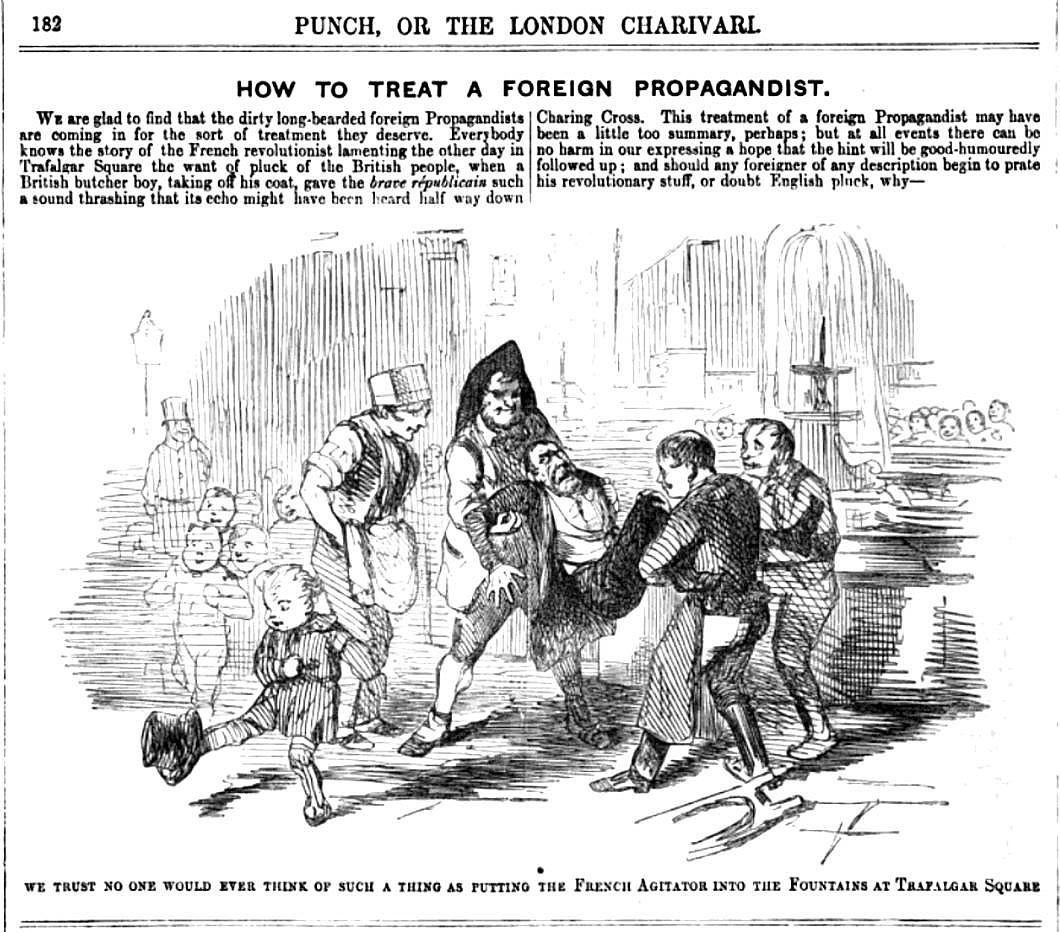
Ladies and gentlemen of ‘the left’, whether foreign or domestic, have long groaned over the earnest patriotism and lack of zeal for revolutionary destruction amongst the British working classes.
As this snippet from an 1848 issue of Punch shows, when the fighting power of Britain’s workers is unleashed, it’s usually channelled against the zealots and in defence of hearth of home:
Everybody knows the story of the French revolutionist lamenting the other day in Trafalgar Square the want of pluck of the British people, when a British butcher boy, taking off his coat, gave the brave républicain such a sound thrashing that its echo might have been heard half way down Charing Cross.
This treatment of a foreign Propagandist may have been a little too summary, perhaps; but at all events there can no harm in our expressing a hope that the hint will be good-humouredly followed up; and should any foreigner of any description begin to prate his revolutionary stuff, or doubt English pluck, why —
Weiter vorwärts
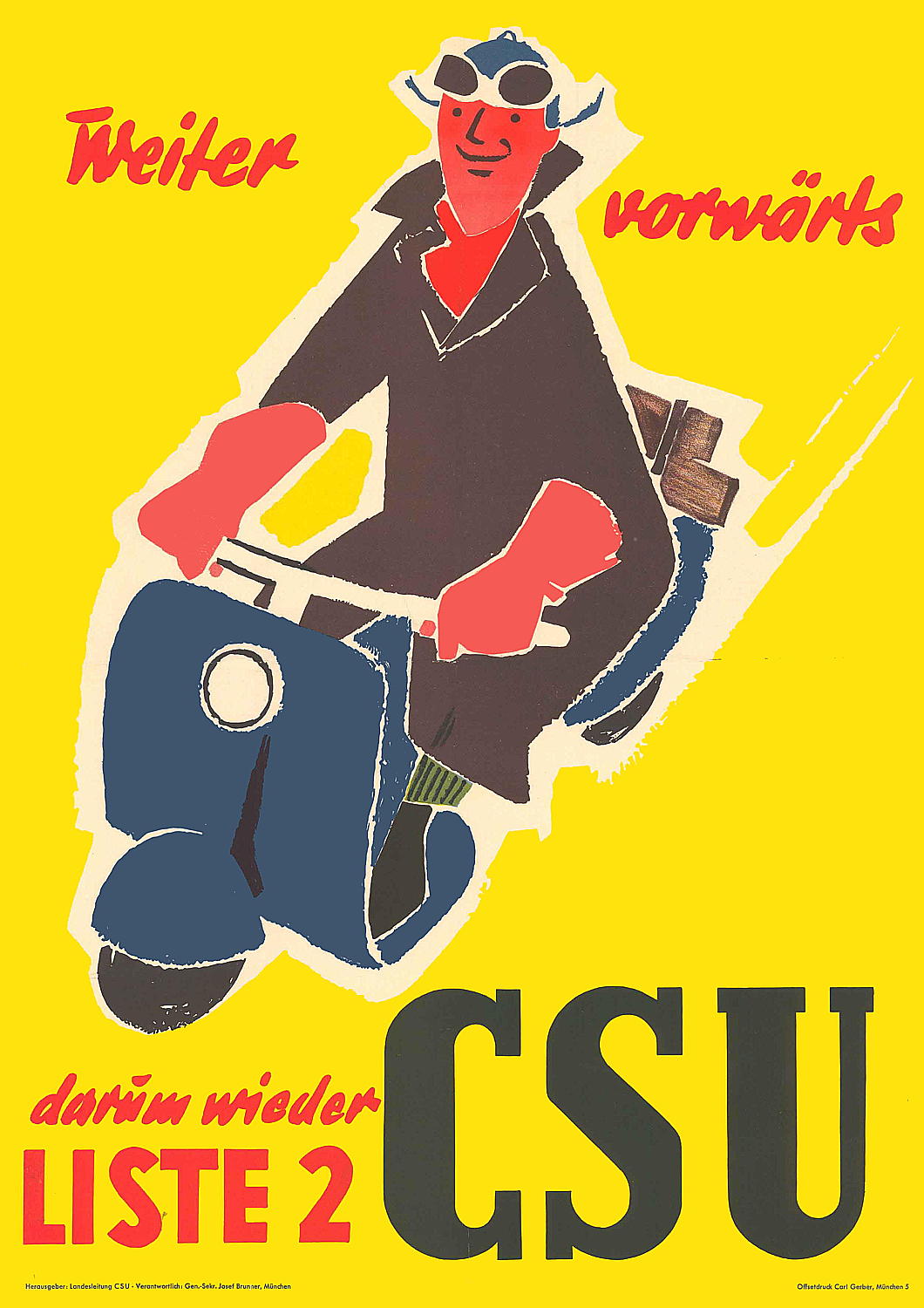
Mexican Diplomats
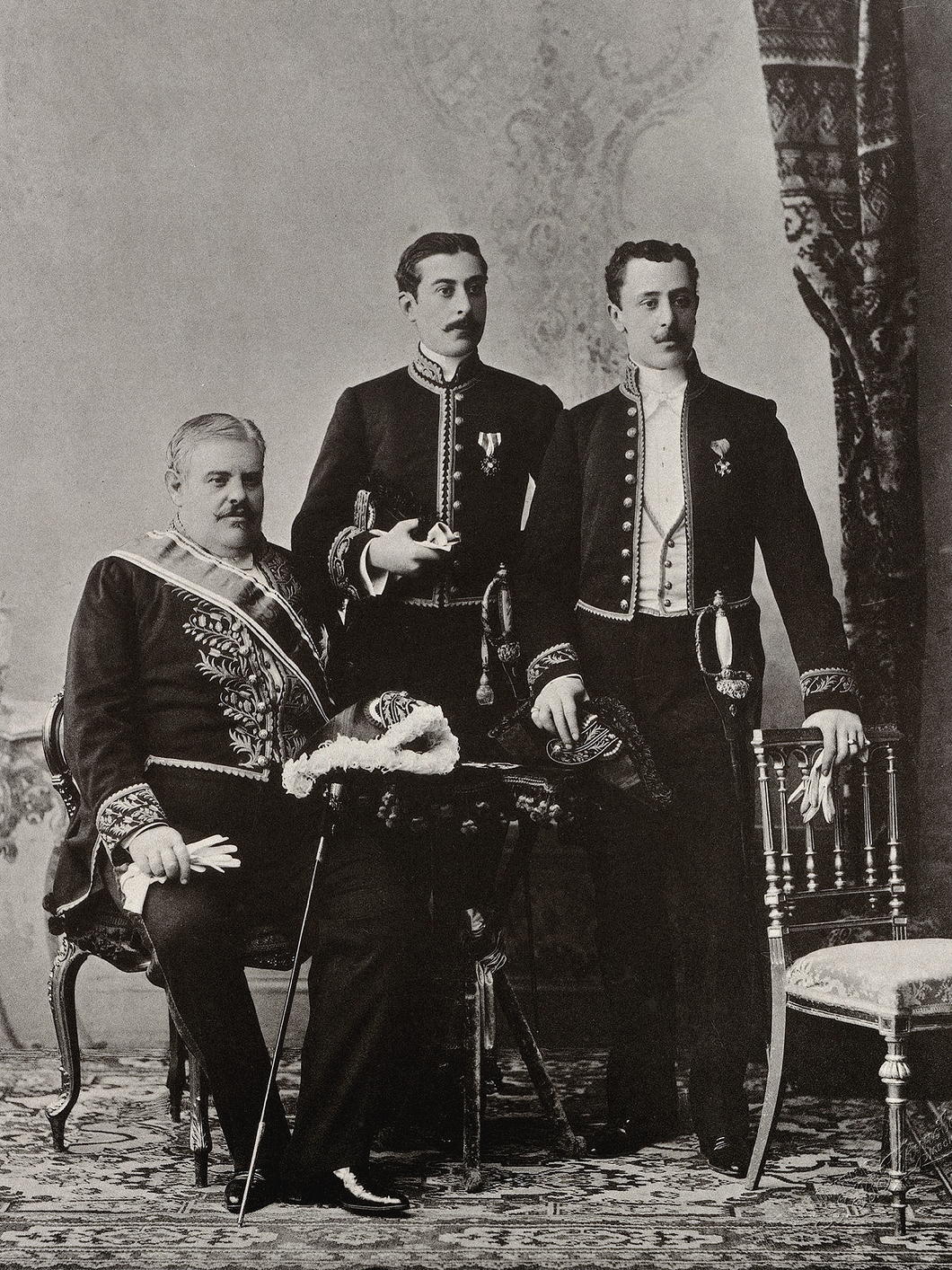
Don Manuel Iturbe, envoy extraordinary and minister plenipotentiary, sits wearing the full civil uniform of an ambassador while the two attachés, Don Miguel Iturbe and Don Juan Beistegui, stand wearing lower grades of diplomatic dress.
All three wear the Order of St Stanislaus — the Polish royal order incorporated into the Romanov orders in 1832.
The records of the Mexican congress shows that Manuel Iturbe was authorised to accept Grand Cross of the order while Miguel (who I presume was Don Manuel’s son though I can’t confirm) and Juan Beistegui had to settle for the ordinary Cross of St Stanislaus.
The Other Modern in Jewish Amsterdam
Jacobus Baars’ Synagoge Oost, Linnaeus Street
There were few places where architecture’s competing forms of modernism overlapped more than the Netherlands in the 1920s. Traditionalists like Kropholler, De Stijl’s Oud, Rationalists like van der Vlugt and Duiker, and the versatile Dudok built alongside the work of the capital’s eponymous ‘Amsterdam school’ style.
The influence of the great Dutch architect Pierre Cuypers — Holland’s Pugin — might be inferred as the progenitors of the Amsterdam school (De Klerk, van der Mey, and Kramer) all studied or worked in the firm of Cuypers’ nephew Eduard.
The Dutch capital’s take on the brick expressionism originated among its Hanseatic neighbours but was sufficiently distinct to merit its own name. Architect Jacobus Baars (1886-1956) deployed the style to great effect in the work he did for Amsterdam’s then-flourishing Jewish community.
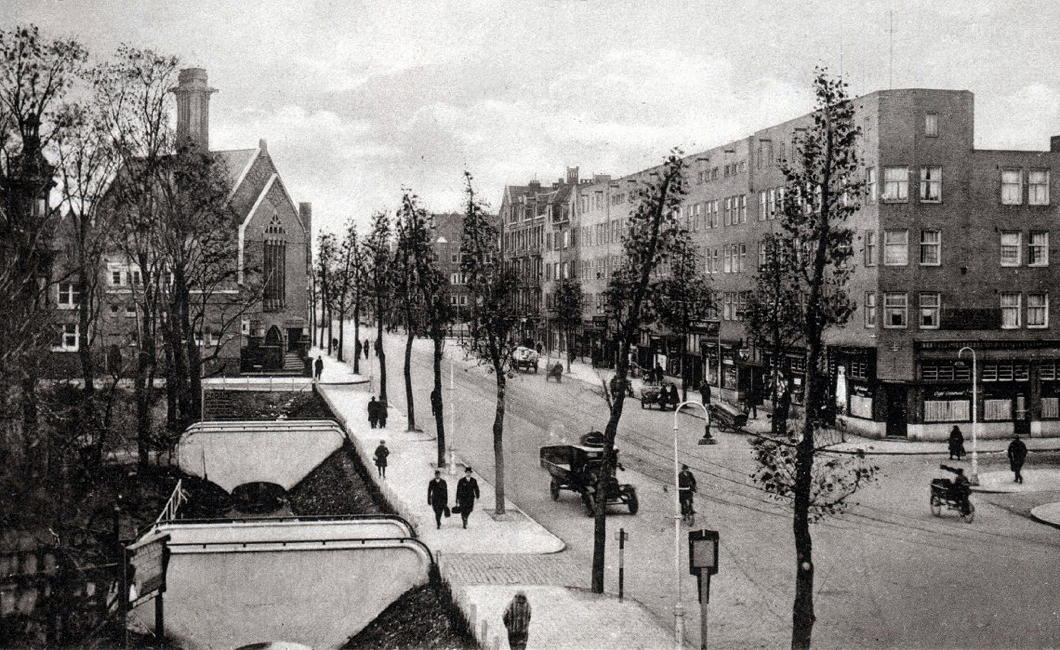
Baars designed the 1928 Synagoge Oost (East Synagogue) on Linnaeusstraat (Linnaeus Street) in the Transvaalbuurt neighbourhood that was developed in the first decades of the twentieth century.
Dutch sympathies in the then-still-recent Anglo-Boer War are obvious from the naming of local streets and squares (and, indeed, the district) after Afrikaner places, battles, and statesmen.
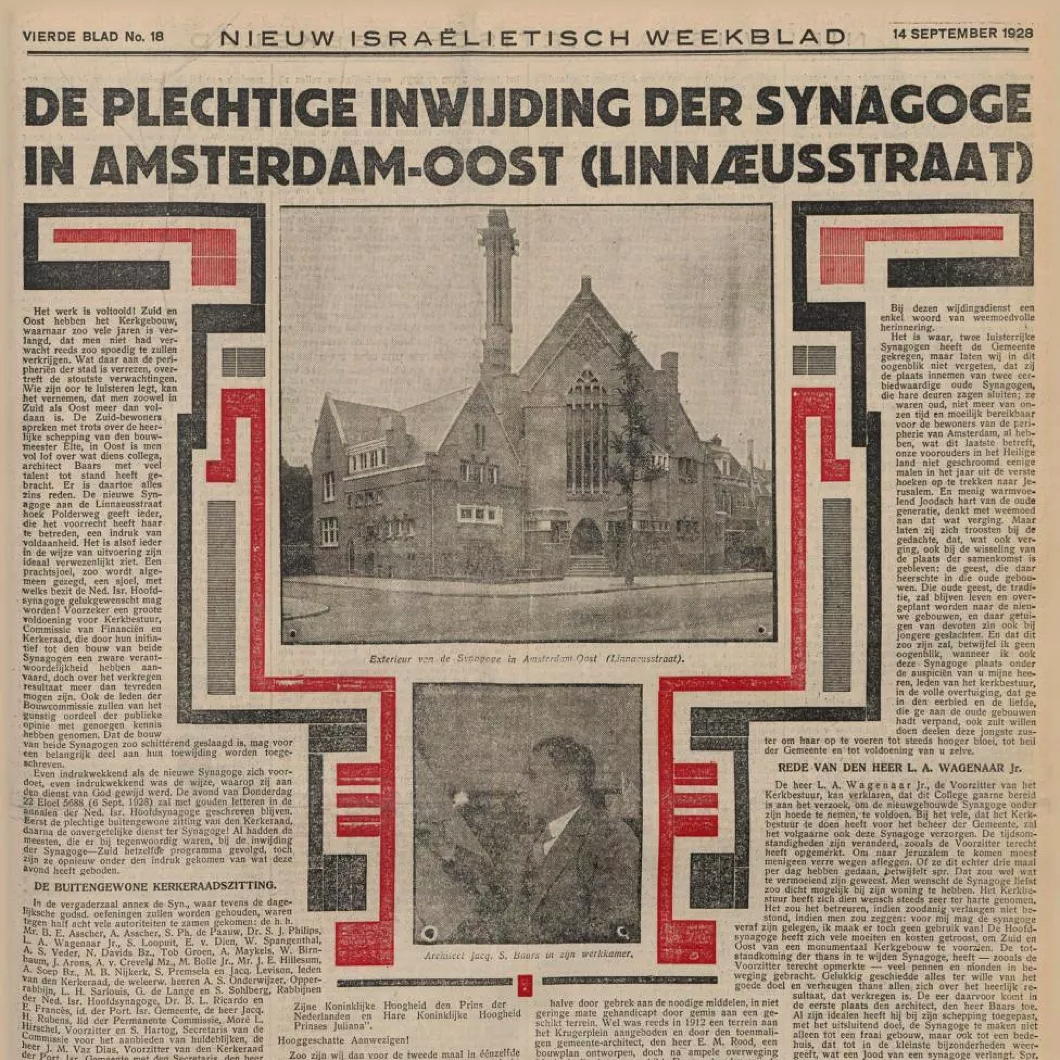
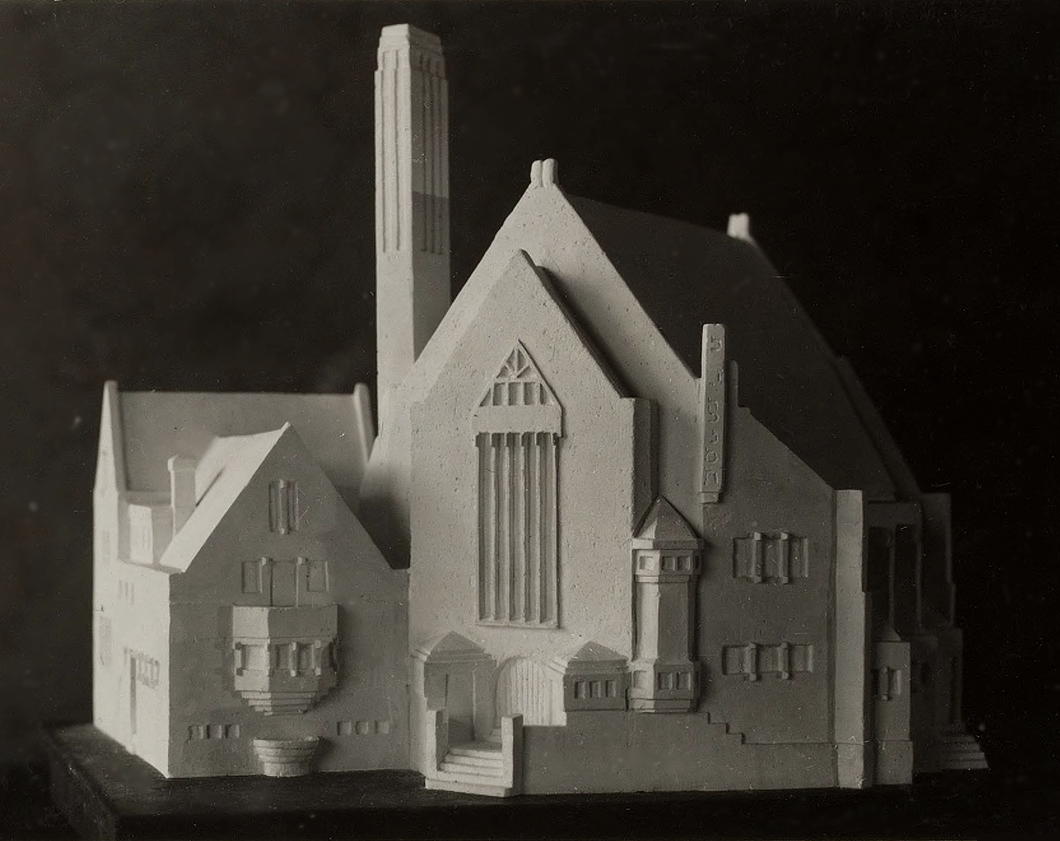
The architect placed the building at an angle so that the entrance could face on to Linnaeusstraat while the holy ark containing the Torah scrolls faced Jerusalem, skilfully filling in the rest of the site with clergy and school structures ancillary to the sanctuary and congregation. (more…)
Ödön von Horváth
When the shop purveying diacritical marks opened one morning in Vienna, in my mind the writer Ödön von Horváth turned up and said “Thanks. I’ll have the lot.”
It wasn’t even his real name, of course — which was Edmund Josef von Horváth. A child of the twentieth century, von Horváth was born in Fiume/Rijeka in 1901. His father was a Hungarian from Slavonia (in today’s Croatia) who entered the imperial diplomatic service of Austria-Hungary and was ennobled, earning his “von”.
“If you ask me what is my native land,” von Horváth said, “I answer: I was born in Fiume, grew up in Belgrade, Budapest, Preßburg, Vienna, and Munich, and I have a Hungarian passport.”
“But homeland? I know it not. I’m a typical Austro-Hungarian mixture: at once Magyar, Croatian, German, and Czech; my name is Hungarian, my mother tongue is German.”
From 1908 his primary education was in Budapest in the Hungarian language, until 1913 when he switched to instruction in German at schools in Preßburg (Bratislava) and Vienna.
Von Horváth went off to Munich for university studies — where he began writing in earnest — but quit midway through and moved to Berlin.
He once told his friends the story of when he was climbing in the Alps and stumbled upon the remains of a man long dead but with his knapsack intact.
Intrigued, he opened the knapsack and found an unsent postcard upon which the deceased had written “Having a wonderful time”.
“What did you do with it?” his friends naturally inquired. “I posted it!” was von Horváth’s reply.
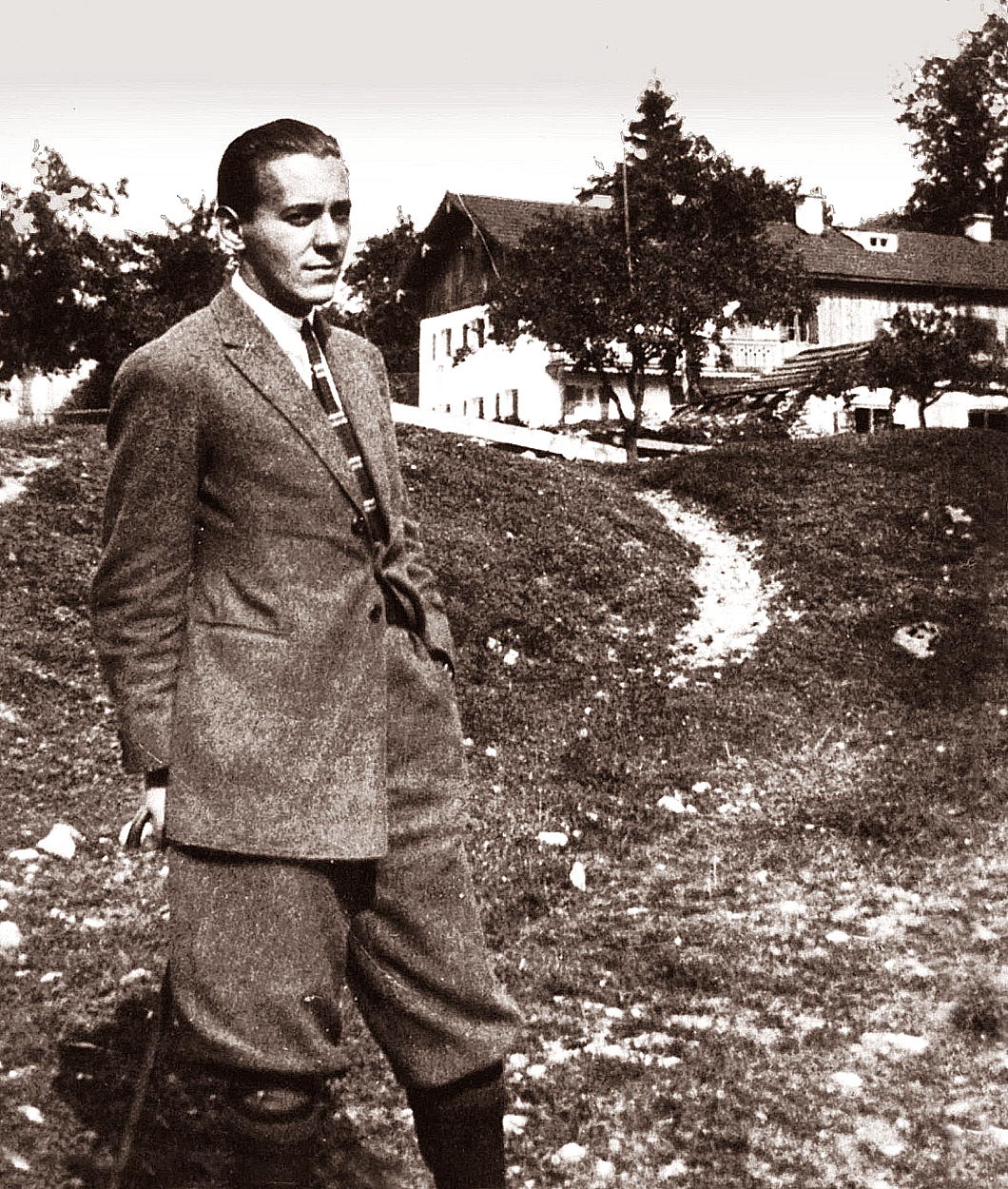
In 1931 he was awarded the Kleist Prize for literature, but two years later the National Socialists took the helm and von Horváth thought it best to move across the border to his old imperial capital of Vienna.
Despite his anti-nationalism, he did initially join the guild for German writers set up by the Nazis, possibly to keep his works in print in the Reich while he was living in still-independent Austria.
It was in Vienna he published his best-known work: Jugend ohne Gott — “Youth without God” (first translated into English as The Age of the Fish), which marked his public point-of-no-return break with the Hitlerites.
The novel depicts a jaded schoolteacher increasingly disconnected from his profession and the world around him as the ideology of National Socialism begins to take root in the education system. (Bizarrely, it was also scantly used as the basis for a 2017 dystopian thriller.)
When Hitler’s troops marched into Austria the following year, von Horváth fled to Paris.
“I am not so afraid of the Nazis,” he told a friend there one day. “There are worse things one can be afraid of, namely things you are afraid of without knowing why. For instance, I am afraid of streets. Roads can be hostile to you, can destroy you. Streets frighten me.”
Days later, in the middle of a thunderstorm, von Horváth was walking down the Champs-Élysées — the most famous street in Paris — when a flash of lightning struck a tree, felled a branch, and struck the writer dead. He had been on his way to the cinema to see Walt Disney’s ‘Snow White and the Seven Dwarfs’.
Years ago someone recommended The Eternal Philistine: An Edifying Novel in Three Parts to me, but I have to admit I haven’t yet read it, or much else of von Horváth’s work. (He’s on my fiction wish-list though.)
His plays have been revived, too — here in London at the Almeida and the Southwark Playhouse in the past decade or so — and both The Eternal Philistine and Youth Without God are available in English from the estimable Neversink Library imprint of Melville House.
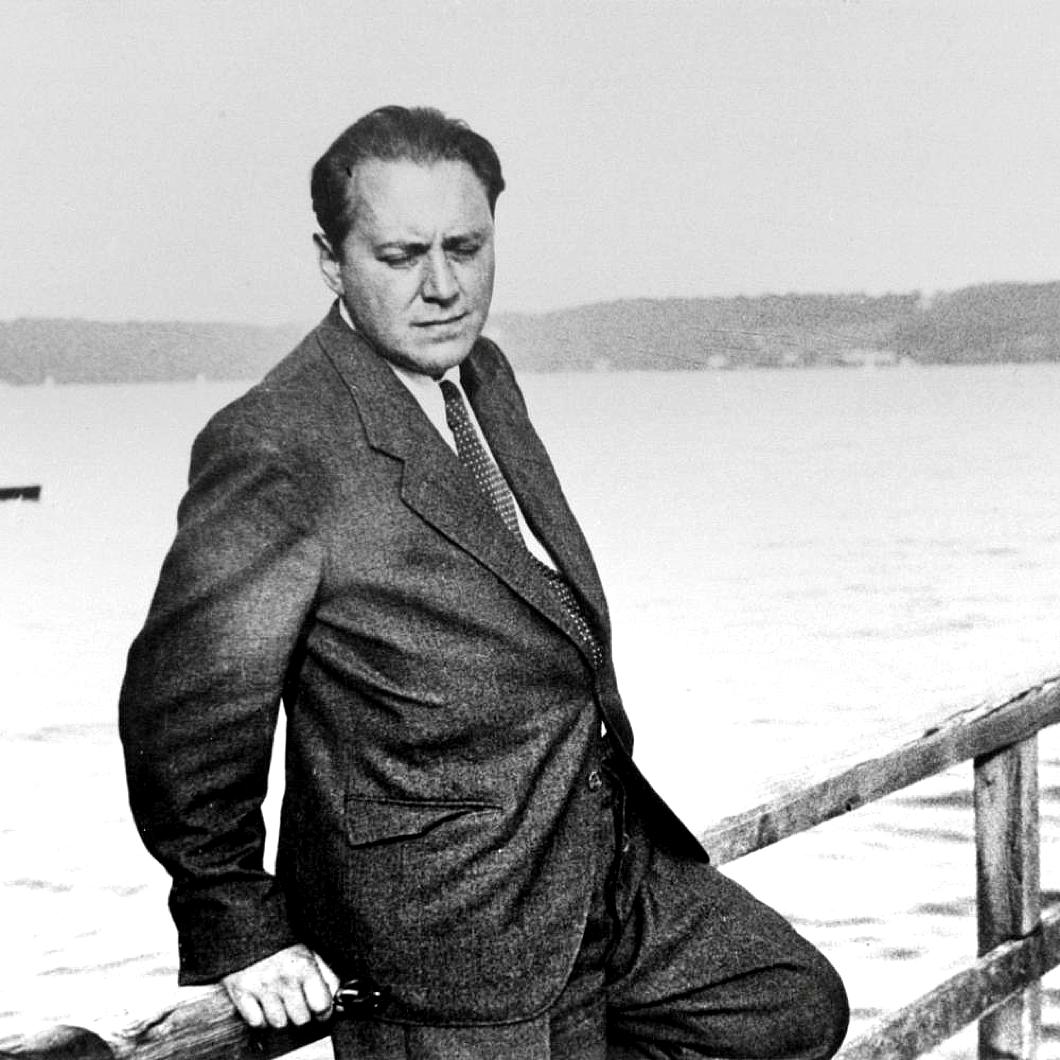
The Irishman at Yorktown
General Charles O’Hara and the Surrender of Lord Cornwallis
Today marks two-hundred-and-forty-one years since the British general Lord Cornwallis surrendered to a joint Rebel-French force at Yorktown in Virginia — perhaps the most embarrassing British defeat until the Fall of Singapore to the Japanese more than a century and a half later.
Every American schoolboy, or indeed any visitor to the United States Capitol, is familiar with John Trumbull’s oil painting of the scene at Yorktown.
Somewhat pitifully, Lord Cornwallis pled ill health and did not attend the formal ceremony of surrender.
Instead, he sent his adjutant to act on his behalf: a wily character by the name of General Charles O’Hara.
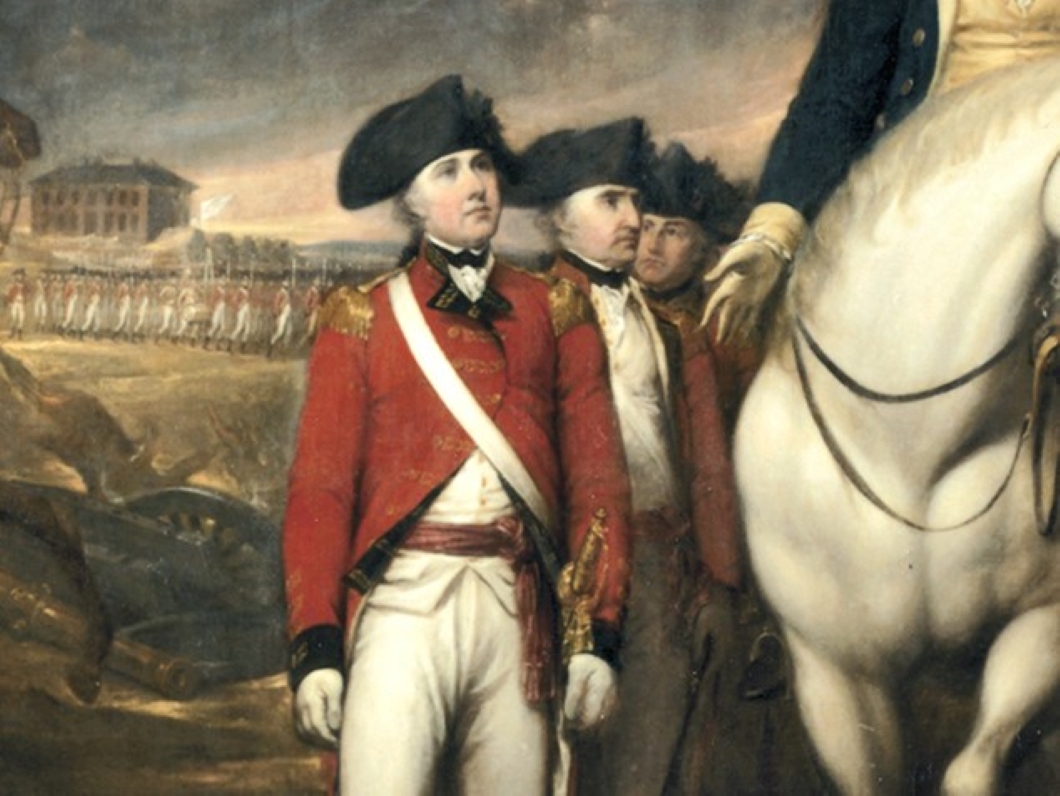
O’Hara had soldiering in his blood, being the illegitimate son of a Portuguese woman and Field Marshal the Rt Hon James O’Hara, 2nd Baron Tyrawley and 1st Baron Kilmaine. The elder O’Hara was the sometime envoy-extraordinary to the King of Portugal, where he made the acquaintance of the woman who bore him one of at least three of his sons-born-the-other-side-of-the-blanket.
Lord Tyrawley looked after his son, sending him to Westminster School before buying him an army commission and keeping him close by in the Coldstream Guards which the father commanded himself.
Young Charles was at one point sent on assignment to Senegal commanding a corps of African army convicts which, reading between the lines, may have been a punishing demotion.
He soon regained his command with the Guards though and was sent to America where the royal troops were fighting against a surprisingly cohesive force of rebel English colonists.
Despite being surrounded by numerous American loyalists, O’Hara tended to distrust the colonists and viewed them with suspicion, tarring them all with the brush of rebellion openly practiced only by a distinct (but ultimately successful) minority.
He was wounded at the Battle of Guildford Court House in March 1781, and by the Siege of Yorktown had been promoted to Cornwallis’s second-in-command. (more…)
Harlem Reformed Dutch Church
For much of Manhattan’s early colonial history, the island was home to two primary settlements: the port of New Amsterdam (later, from 1664, New York) way down at the southern tip and the town of Harlem up where the East River meets the Harlem River.
Christened after the Dutch city, Harlem is one of Manhattan’s most visible links to the Netherlands. The local newspaper is even called the New York Amsterdam News, once a prominent voice in Black America given this neighbourhood became predominantly African-American in the early twentieth century, and Amsterdam Avenue runs up as the spine of West Harlem.

Harlem was founded in 1658, thirty-four years after New Amsterdam was founded and thirty-two since Peter Minuit bought the whole island of Mannahatta off the Indians for sixty guilders.
The town’s first church was founded in 1660 but didn’t have its own dedicated building for a few years. The Harlem Reformed Dutch Church, or Collegiate Church of Harlem, was built in 1665-67 right on the banks of the Harlem River, around the site of East 127th Street and First Avenue today.
Both the building and site was abandoned twenty years later when the congregation moved to its second building, completed 1687, just a little bit further south — near where East 125th meets First Avenue, or where the entrance ramp to the Triborough Bridge meets 125th.
It is this second building, which is depicted in the view above of Harlem village from Morissania across the river in the Bronx in 1765 (below).
The Situation in the Far East
A century-old geopolitical cartoon is updated for today
Tse Tsan-tai — or 謝纘泰 if you fancy — was by any standard a remarkable man. Born in New South Wales, this Chinese-Australian Christian was a colonial bureaucrat, nationalist revolutionary, constitutional monarchist, pioneer of airship theory, and co-founded the South China Morning Post — still one of the most prominent newspapers in the Orient.
Tse’s most important visual contribution was a widely distributed political cartoon usually known in English as ‘The Situation in the Far East’ or in Chinese as the ‘Picture of Current Times’ (below).
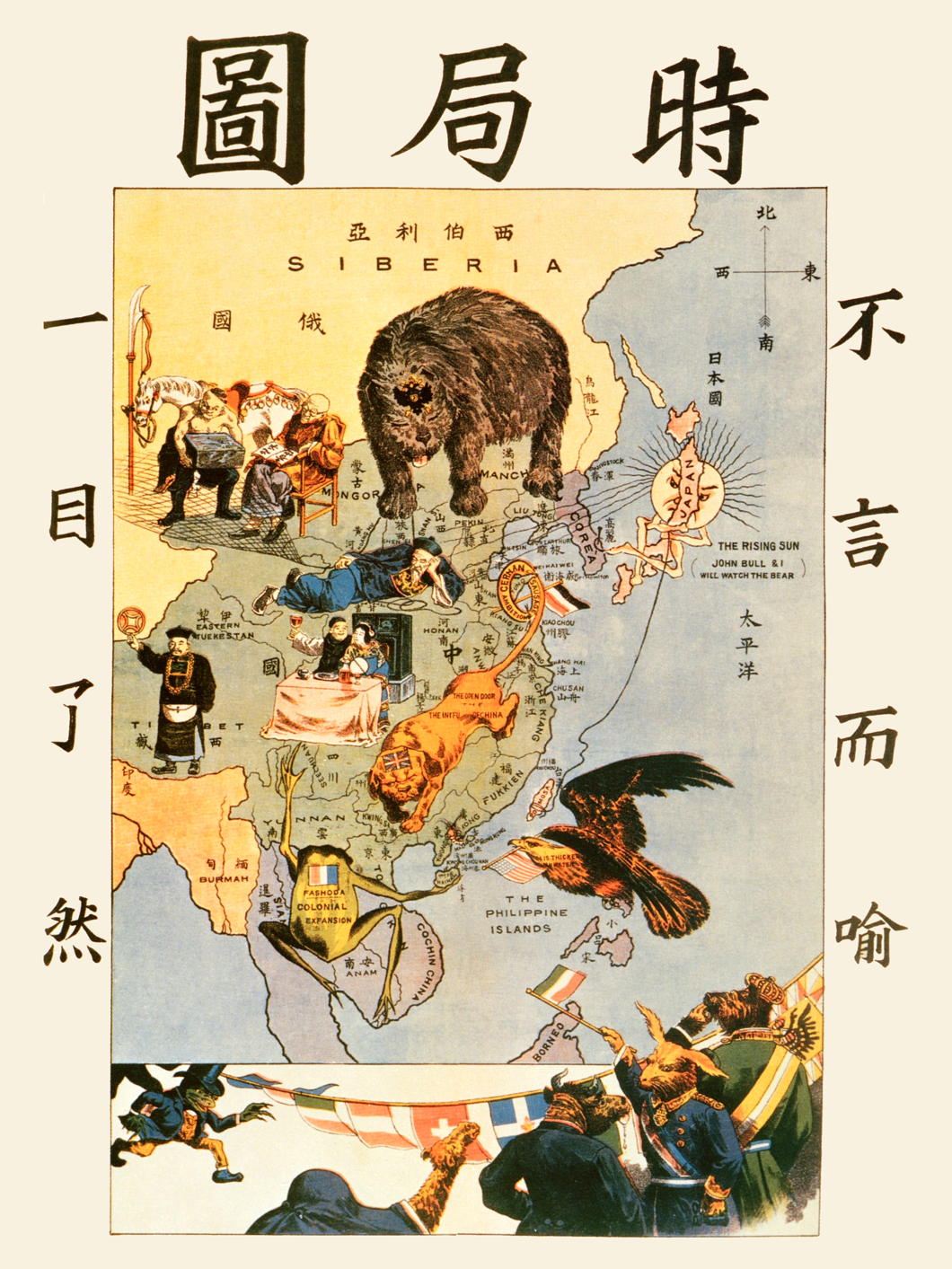
Crafted as a propaganda measure to warn his fellow Chinese of the designs of foreign powers, the cartoon depicts the perils facing the Middle Kingdom.
Japan, with its expanding navy, proclaims it will watch the seas with its ally, Great Britain. The Russian bear looms from Siberia, crossing the border into China. A British lion sprawls over the land, its tail tied up by the “German Sausage Ambitions” at Tsingtao. The French frog guards Indochina while the American eagle lurks from the Philippines.
Meanwhile, the Chinese figures show sleeping bureaucrats and carousing intelligentsia unresponsive to the external threats.

Now the exiled Hong Kong artist Ah To (阿塗) has updated ‘Situation’ to reflect the realities of 2022. (more…)
Search
Instagram: @andcusack
Click here for my Instagram photos.Most Recent Posts
- A Christmas Gift from the Governor December 24, 2024
- Oude Kerk, Amsterdam December 24, 2024
- Gellner’s Prague December 19, 2024
- Monsieur Bayrou December 18, 2024
- Dempsey Heiner, Art Critic December 17, 2024
Most Recent Comments
Book Wishlist
Monthly Archives
Categories

